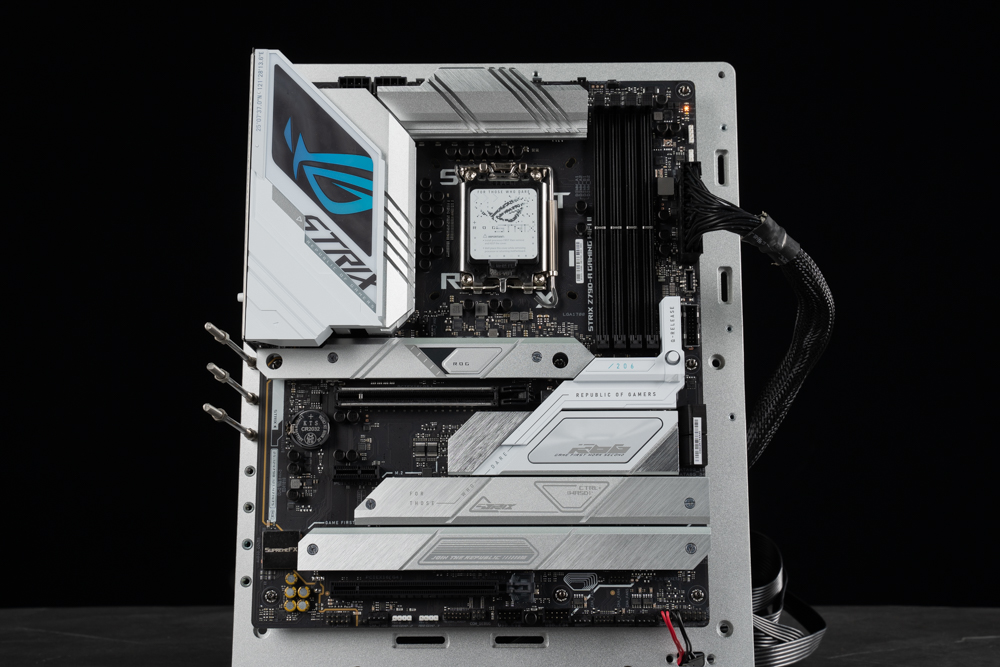
The ROG STRIX Z790-A GAMING WIFI II, boasting a sleek silver-white armor, is now enhanced with Intel’s 14th generation compatibility. This motherboard is a powerhouse with the latest Wi-Fi 7 technology and an innovatively designed Q-ANTENNA for superior connectivity. It features a robust 16+1+2 phase power supply, effortlessly supporting the high-end i9-14900K processor. For ultimate gaming performance, it includes 5 PCIe 4.0 M.2 slots and supports memory speeds exceeding 8000+ MT/s. This motherboard is packed with user-friendly features, offering gamers a seamless and efficient building experience.
Key Specifications of the ROG STRIX Z790-A GAMING WIFI II:
- Form Factor: ATX, measuring 30.5cm x 24.4cm.
- Processor Compatibility: Supports Intel Core 12th/13th/14th Gen, Pentium Gold, and Celeron CPUs.
- Processor Socket: LGA 1700.
- Power Phase: 16+1+2 Phase with 70A.
- Chipset: Intel Z790.
- BIOS: 256Mb flash ROM, UEFI AMI BIOS.
- Memory Support: 4 DIMM slots, up to 192GB DDR5 8000(OC) XMP.
- Video Outputs: HDMI 2.1 and DP 1.4.
- Expansion Slots: PCIe 5.0 x16, PCIe 4.0 x16 (x4 mode), PCIe 3.0 x1.
- Storage Interfaces: 4 SATA 6Gb/s ports, 5 M.2 PCIe 4.0 x4 slots.
- Networking: Intel® 2.5GbE LAN chip.
- Wireless: Wi-Fi 7 2×2 (2.4/5/6GHz) and Bluetooth 5.4.
- Audio: ALC4080 CODEC, 5 Audio jacks.
- USB Ports: Various USB configurations including USB-C 20Gbps with 30W PD charge.
- RGB Support: 3 ARGB Gen2 and 1 AURA RGB headers.
- Cooling: Multiple fan headers including 4-pin CPU, AIO PUMP, CPU OPT, and Chassis Fans.
Silver style, high-end materials | ROG STRIX Z790-A GAMING WIFI II motherboard unboxing
The ROG STRIX Z790-A GAMING WIFI II series motherboards have quickly become a favorite in the gaming community, thanks to their striking silver-white armor and robust specifications. These motherboards stand out as one of the first to incorporate Wi-Fi 7 wireless modules. They boast an upgraded power supply, moving from a 16+1 phase to an enhanced 16+1+2 phase configuration. The number of PCIe 4.0 M.2 slots has increased from four to five, and the memory speed soars to 8000MT/s. Combined with its extensive expandability and gamer-friendly design, this motherboard is an ideal choice for players seeking top-tier performance.
The design of the ROG STRIX Z790-A GAMING WIFI II has undergone significant changes compared to its predecessors, featuring a more prominent white color scheme and an enlarged heat sink area. The sleek silver-white look, accentuated with eye-catching RGB lighting, has garnered immense popularity among gamers, many of whom are eager to invest in this high-performance motherboard.
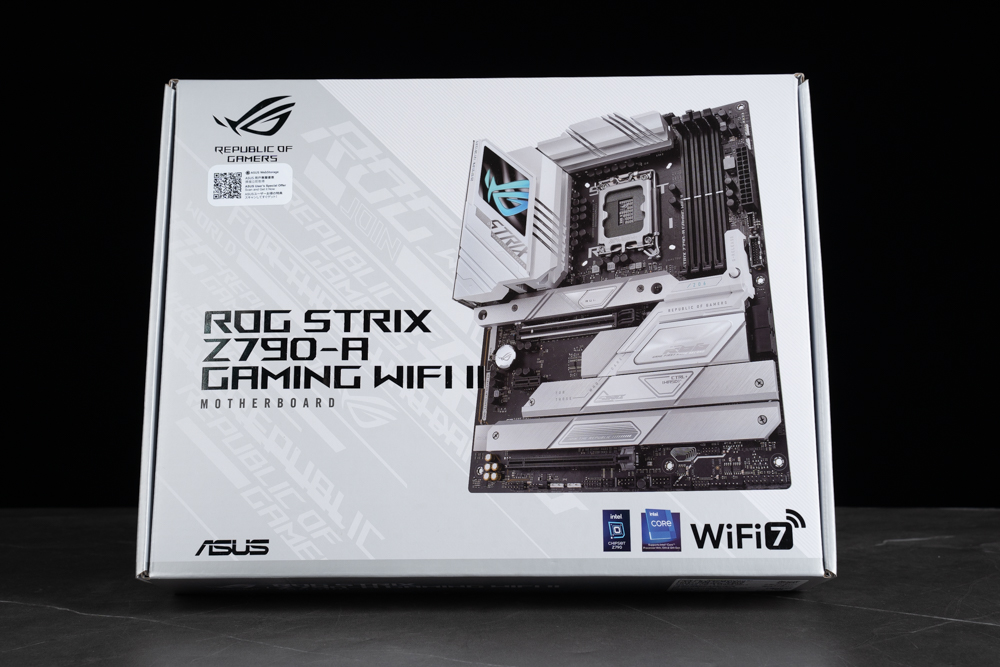
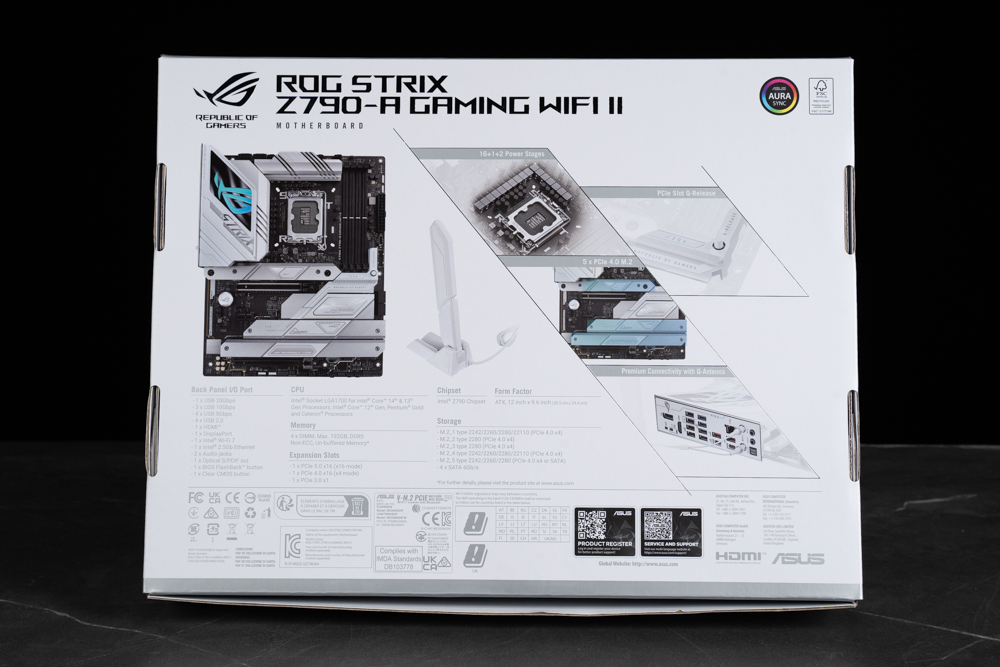
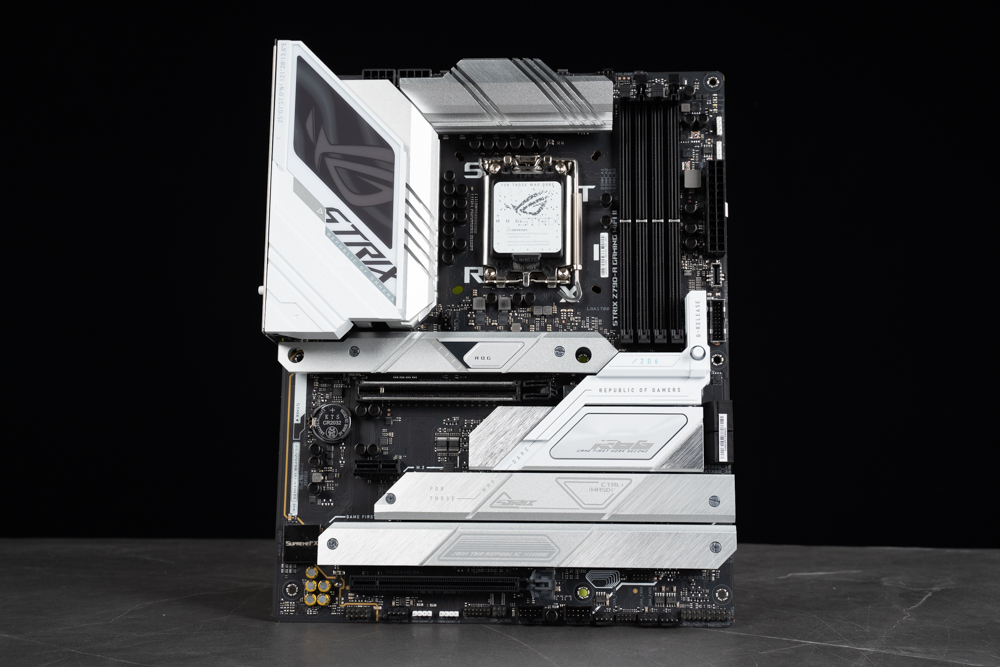
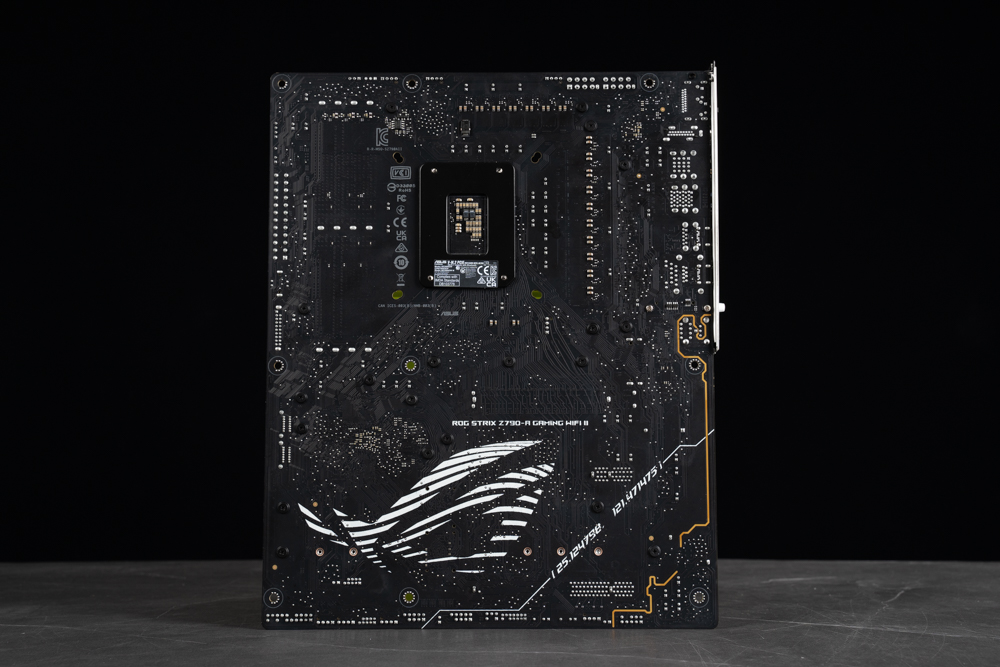
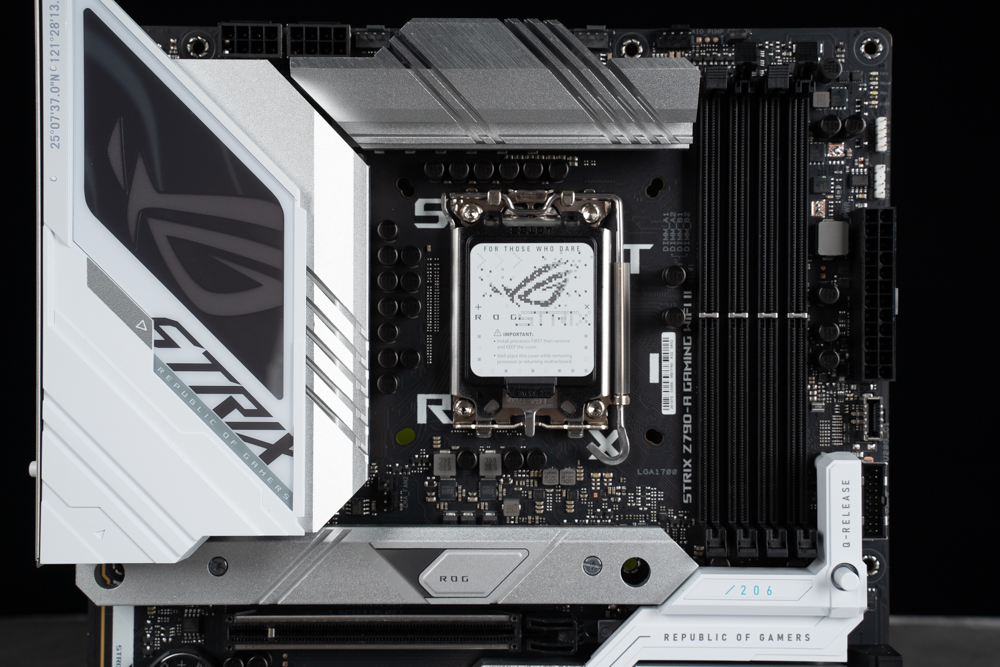
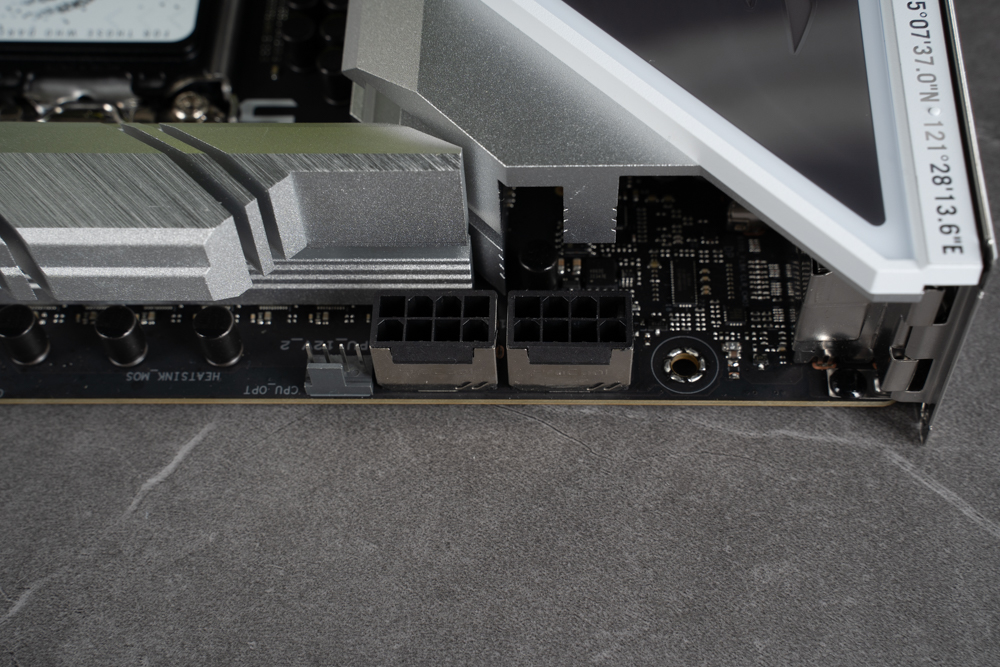
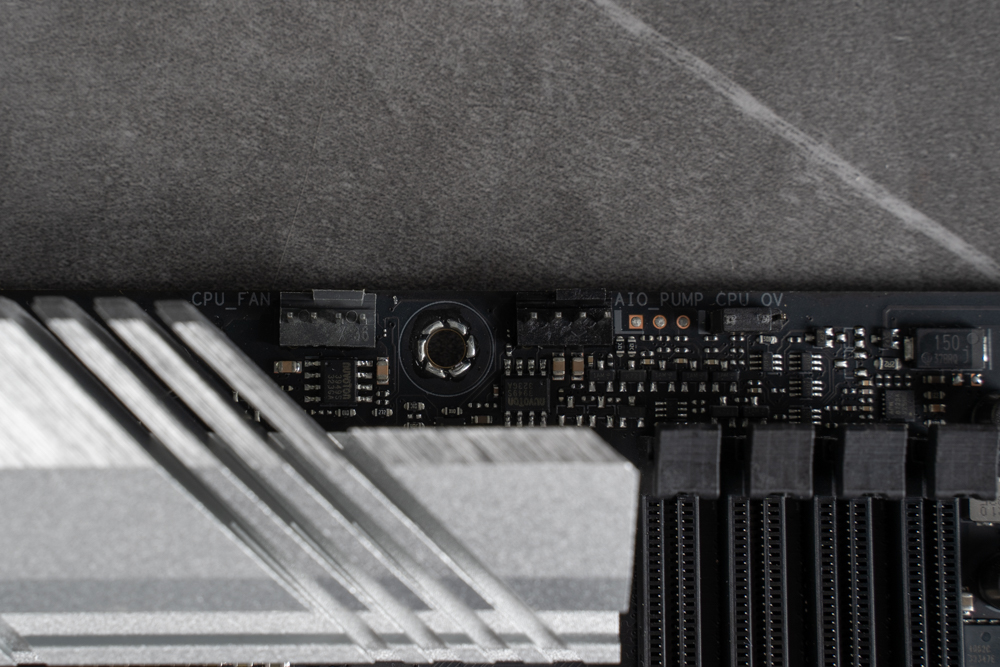
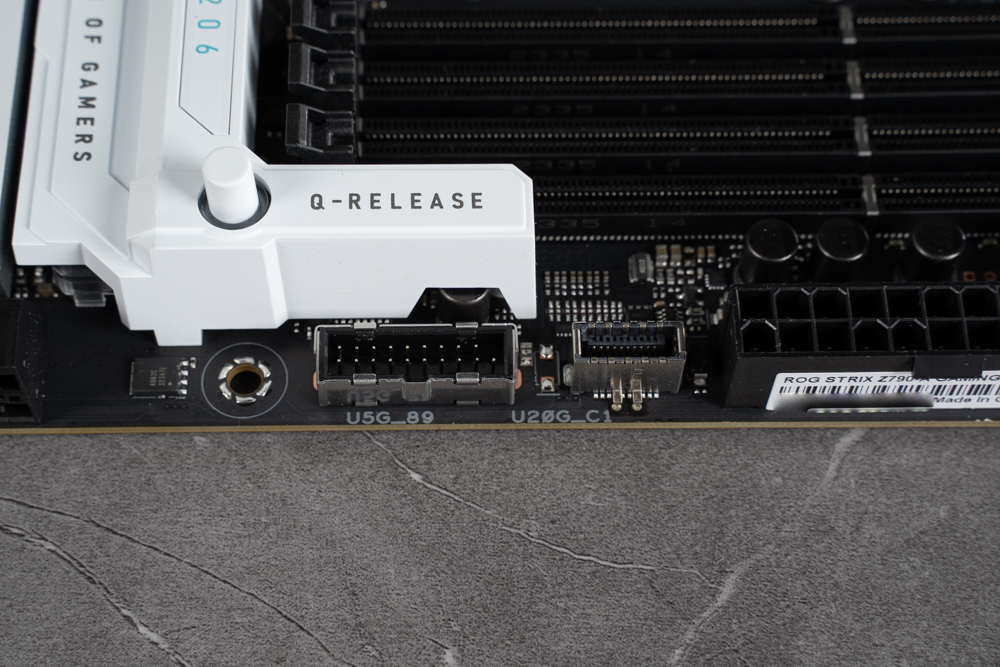
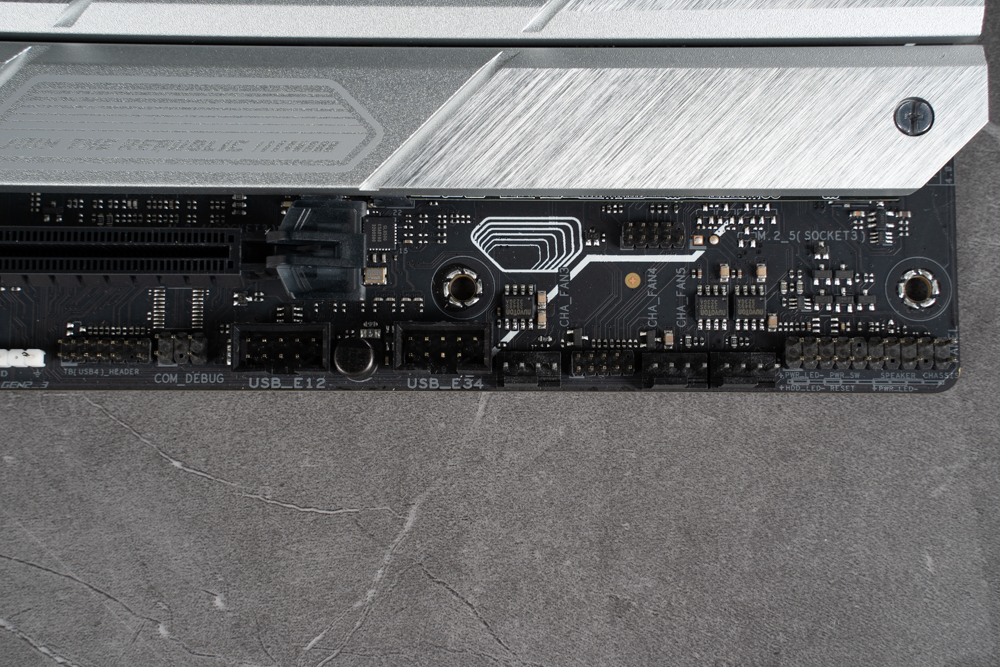
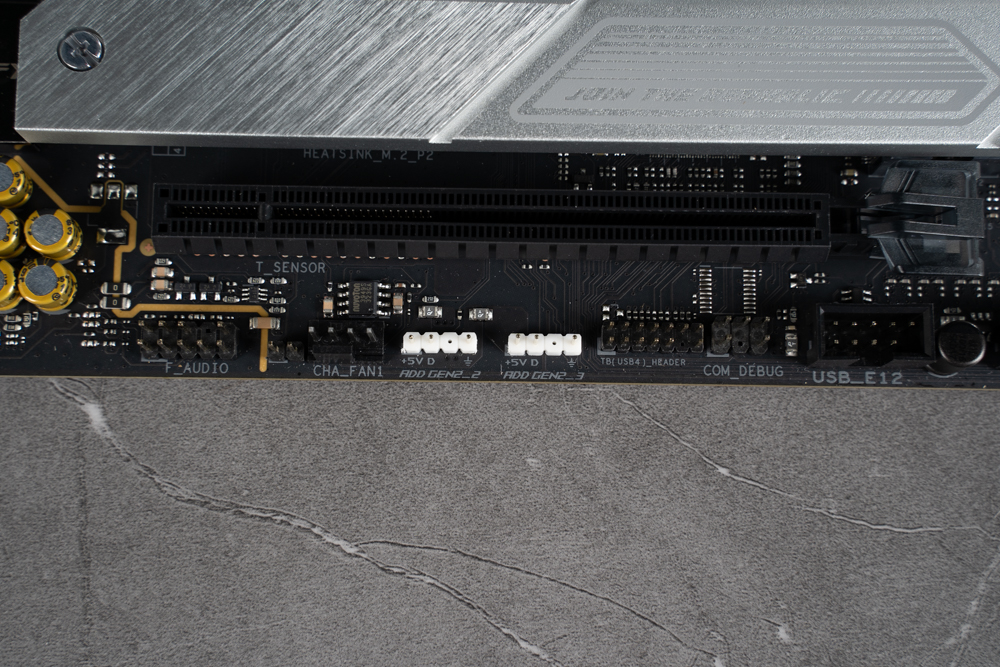
The ROG STRIX Z790-A GAMING WIFI II motherboard, featuring the advanced Z790 chipset, adheres to the standard ATX form factor. It is designed to support Intel Core processors from the 12th, 13th, and 14th generations. This motherboard is equipped with four DDR5 DIMM memory slots, supporting frequencies up to 8000+ MT/s, ensuring blazing-fast performance. It includes a PCIe 5.0 x16 slot that connects directly to the CPU, alongside additional slots like a PCIe 3.0 x1 and a PCIe 4.0 x16 (operating at x4 bandwidth) linked to the chipset. Significantly, it boasts a total of five M.2 slots, all supporting the speedy PCIe 4.0 x4 interface.
In a strategic move aligning with the preferences of mainstream gamers who predominantly use a single graphics card, the ROG STRIX Z790-A GAMING WIFI II has reduced the number of PCIe slots while increasing the M.2 slots. The multiple PCIe 4.0 x4 slots, positioned at the motherboard’s lower section, are ideal for connecting various single-slot devices such as sound cards and capture cards. As for the necessity of having multiple M.2 slots, it caters to the ‘better to have and not need than to need and not have’ philosophy among gamers.
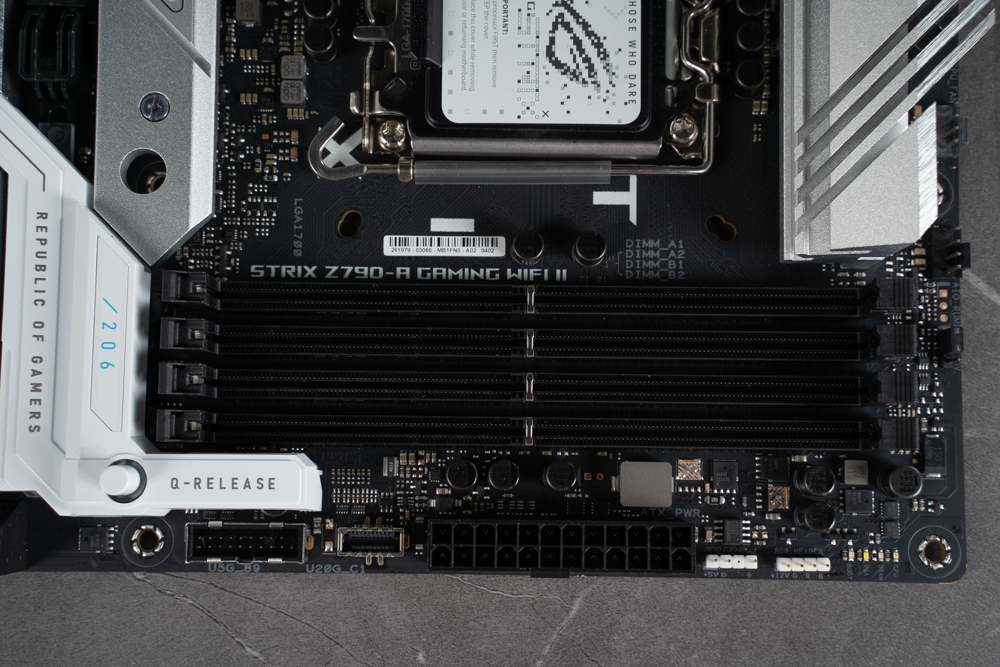
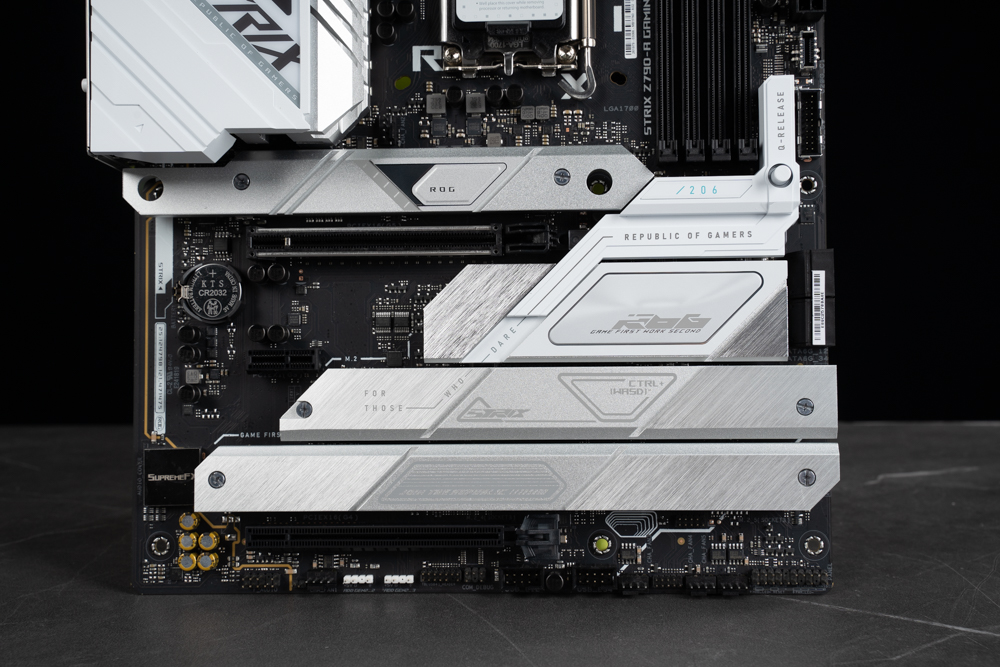
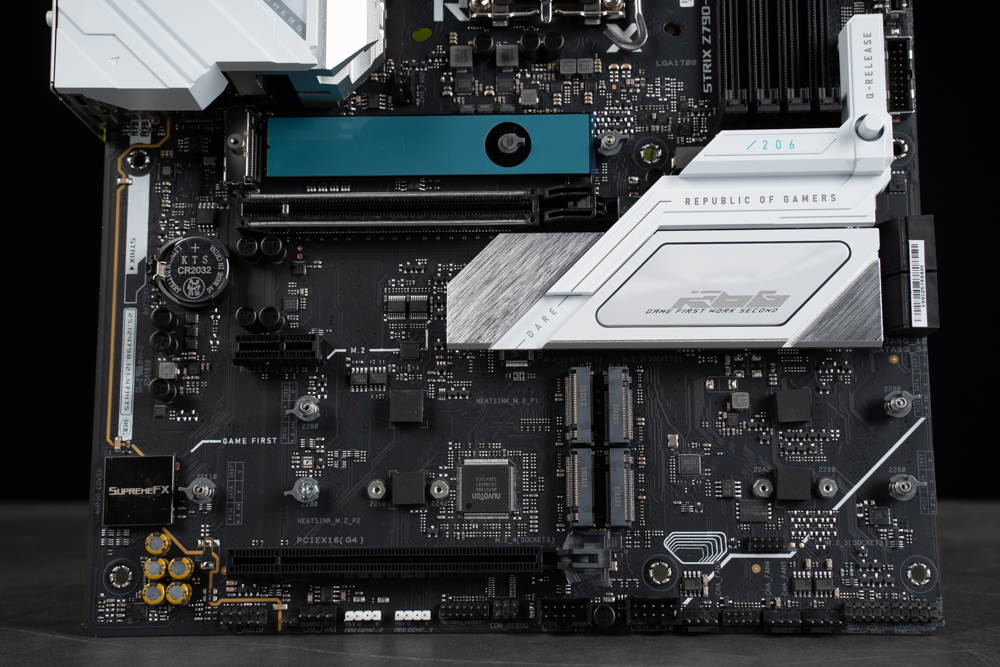
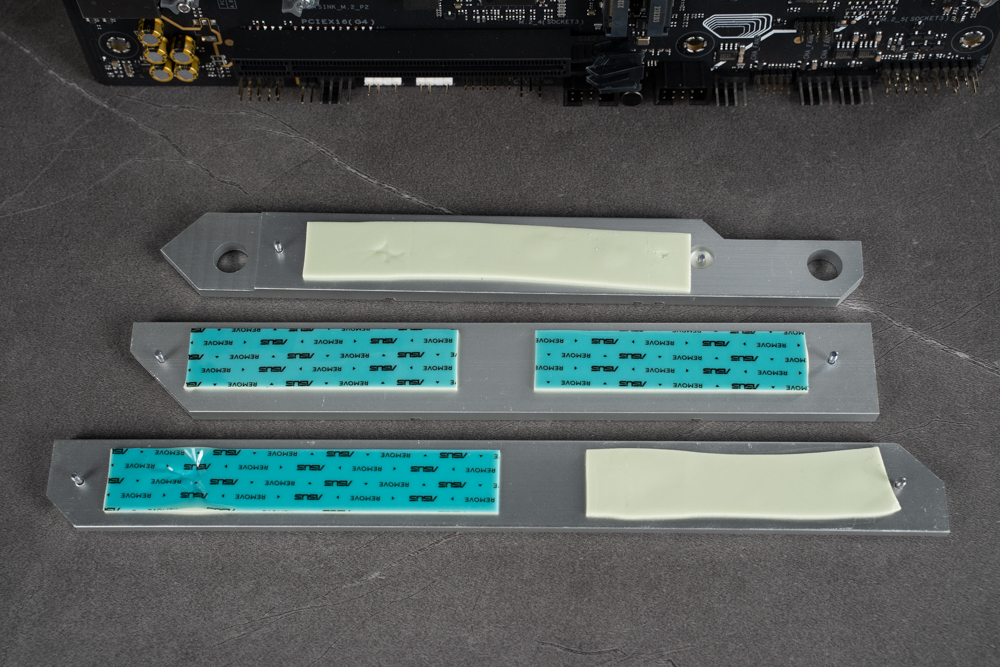
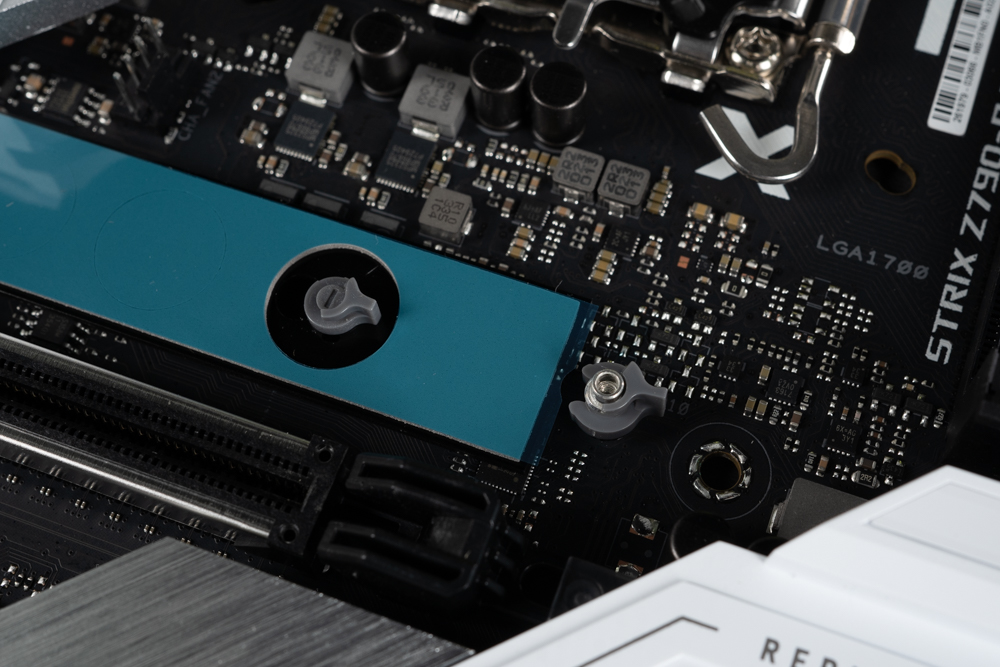
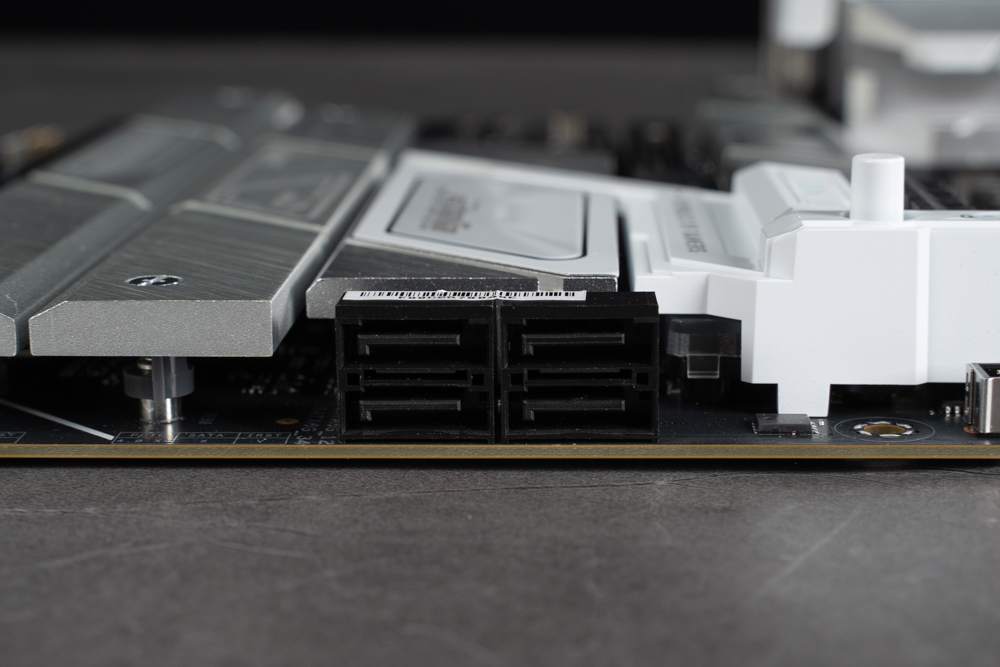
The ROG STRIX Z790-A GAMING WIFI II motherboard features a cutting-edge PCIe 5.0 x16 slot, which is equipped with ASUS’s Q-RELEASE function, a one-click release mechanism for graphics cards. This convenient feature, commonly found in ASUS’s mid-to-high-end product lines, is particularly useful given the growing size of modern graphics cards and PC towers. Its practicality enhances the user experience, especially for enthusiasts who frequently upgrade or modify their gaming setups.
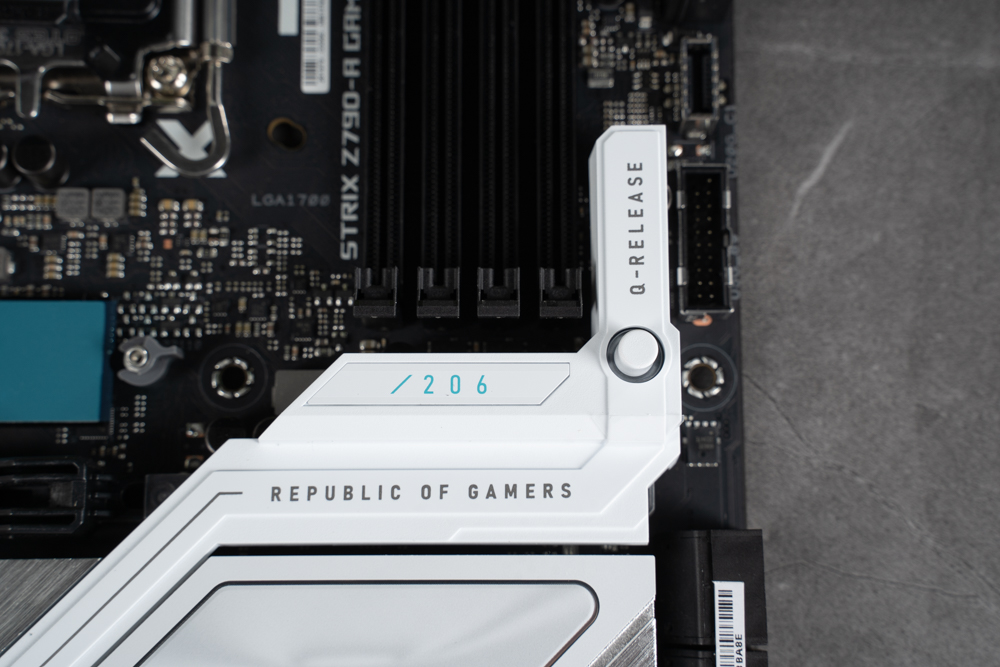
The ROG STRIX Z790-A GAMING WIFI II comes richly outfitted with a comprehensive array of USB ports: four USB 2.0 ports, four USB 3.0 Type-A ports, two USB-A ports supporting 10Gbps, one USB-C port also at 10Gbps, and an additional USB-C port offering a swift 20Gbps. For display and networking, it features one DP1.4 port, an HDMI 2.0 port, and a 2.5GbE network port, along with an audio jack.
This motherboard includes conveniently located Clear CMOS and BIOS FLBK buttons on the rear panel. These features allow for effortless CMOS clearing and BIOS updates without the need for a CPU. While not frequently used, these functions prove invaluable in critical situations, offering peace of mind and ease of maintenance to the user.
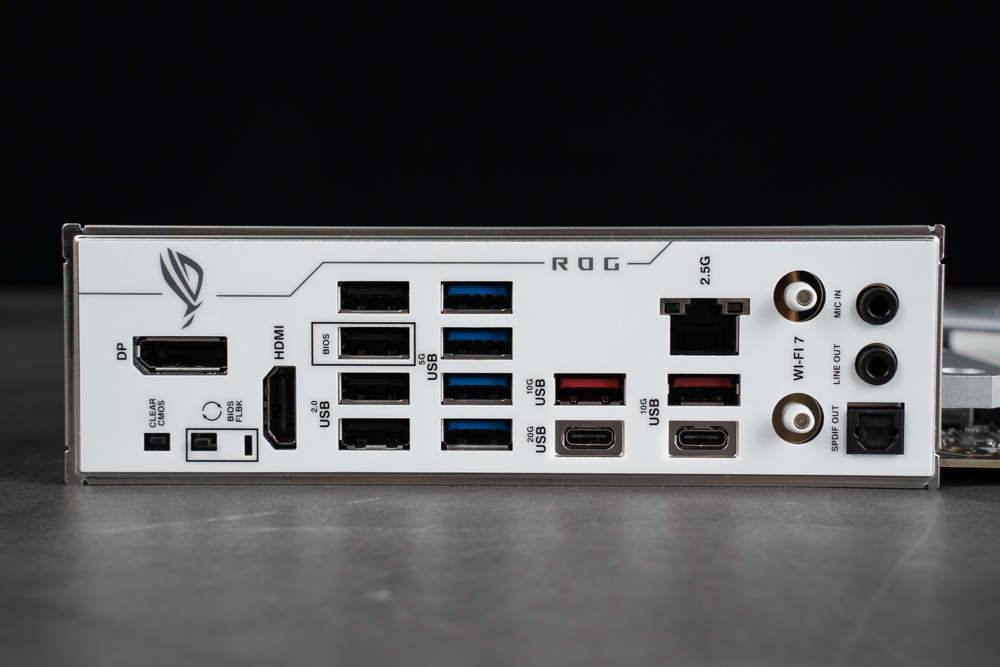
The ROG STRIX Z790-A GAMING WIFI II boasts significant connectivity upgrades with the inclusion of Wi-Fi 7 and Bluetooth V5.4. Although Wi-Fi 7 routers are not yet available in Taiwan, this feature future-proofs the motherboard for upcoming technology. It’s important to note that the official drivers for these features currently only support Windows 11. While future updates might extend support to Windows 10 or third-party solutions may emerge, as of now, Windows 10 compatibility is not available.
In terms of motherboard accessories, the package includes a branded lanyard, themed stickers, replacement M.2 thermal pads and screws, and a Wi-Fi antenna. These extras enhance the overall user experience, providing both practical components for installation and unique branding elements for enthusiasts.
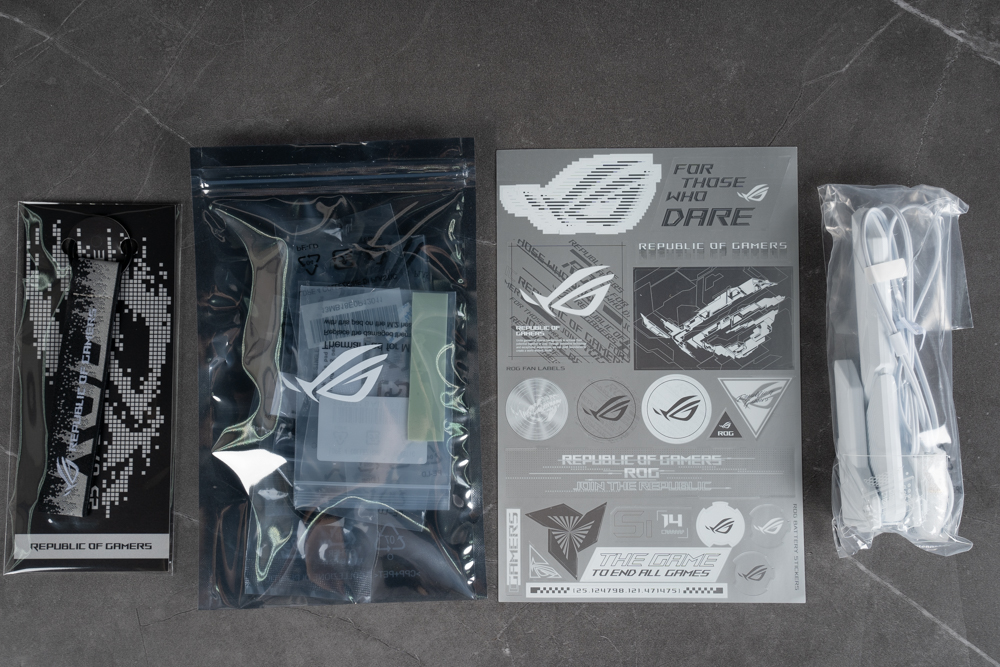
In a significant enhancement, ASUS has introduced the Q-ANTENNA antenna buckle to its Z790 Refresh series motherboards, including the ROG STRIX Z790-A GAMING WIFI II. Previously, users had to manually screw on the antenna nut, a task that wasn’t necessarily challenging but could be cumbersome. The Q-ANTENNA revolutionizes this process, enabling easy installation and removal of the antenna with a simple press-and-pull mechanism. This user-friendly design greatly simplifies the setup and dismantling process, making it far more convenient for gamers and PC builders.
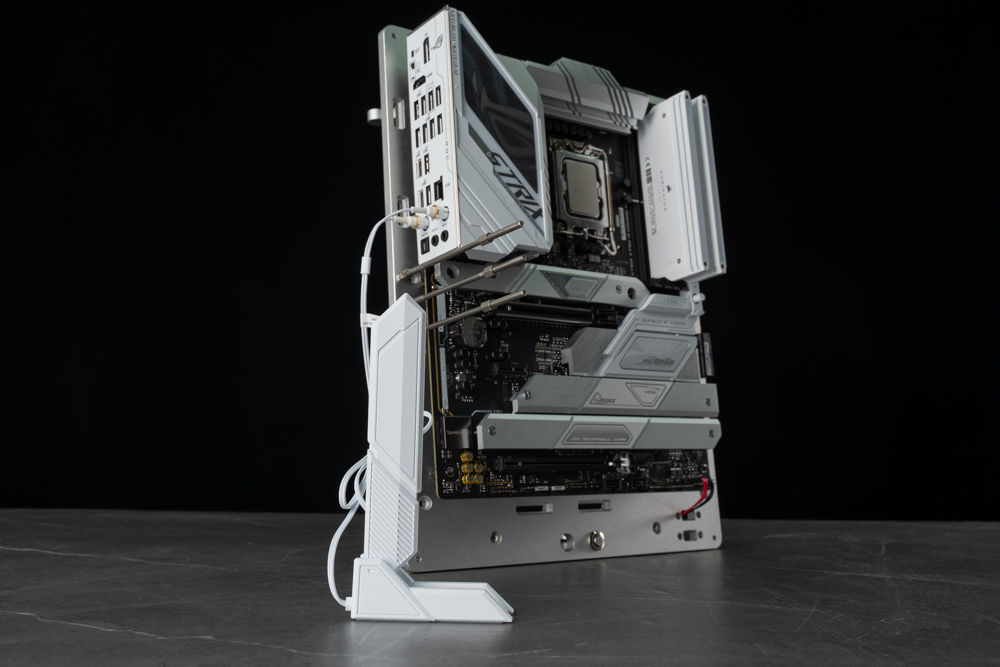
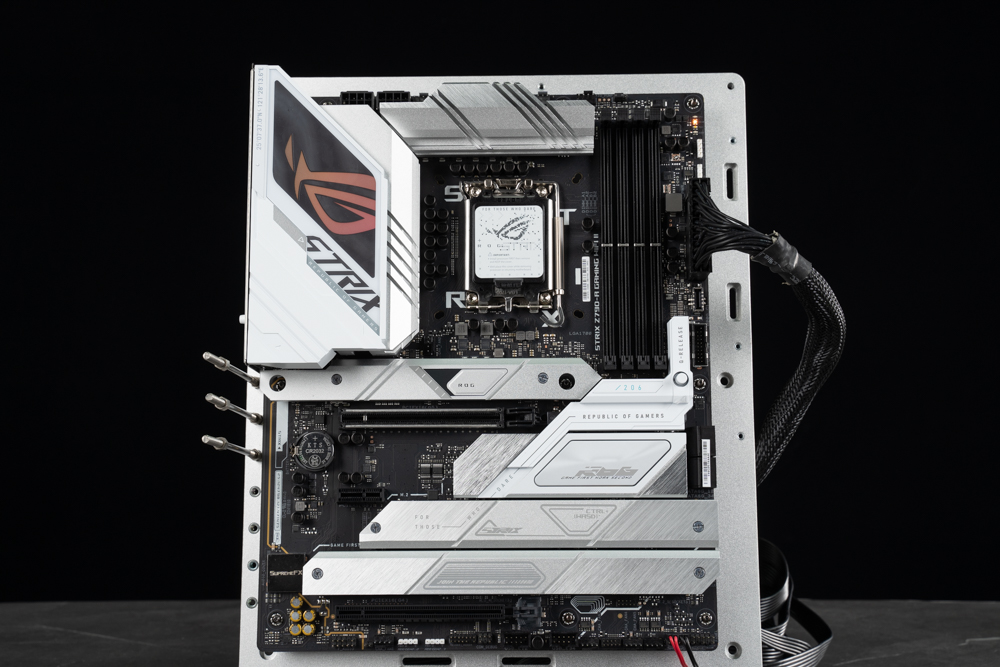
ROG STRIX Z790-A GAMING WIFI II disassembly analysis
The ROG STRIX Z790-A GAMING WIFI II boasts a robust 16+1+2 phase 70A power delivery system, expertly engineered to cater to various power needs. Specifically, 16 phases are dedicated to the CPU, one phase is allocated for the VCCGT internal display power, and two phases for the VCCAUX power supply. This motherboard also features a substantial metal heat sink covering a large area, which is key in ensuring stability under high loads and enhancing overclocking capabilities. Next up, we’ll delve into the internals by removing the heat sink to inspect the underlying components!
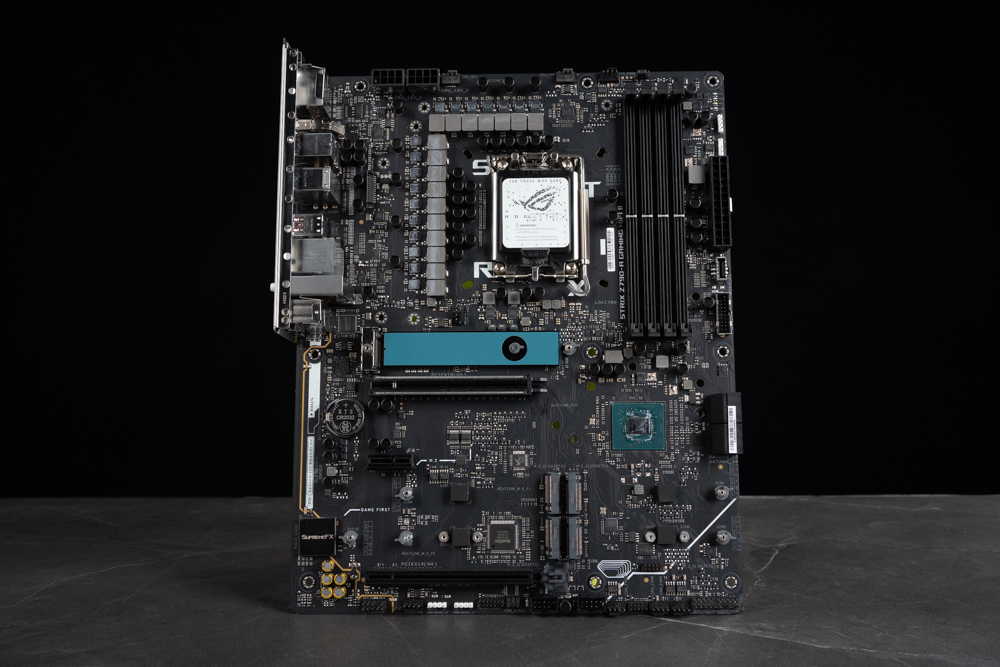
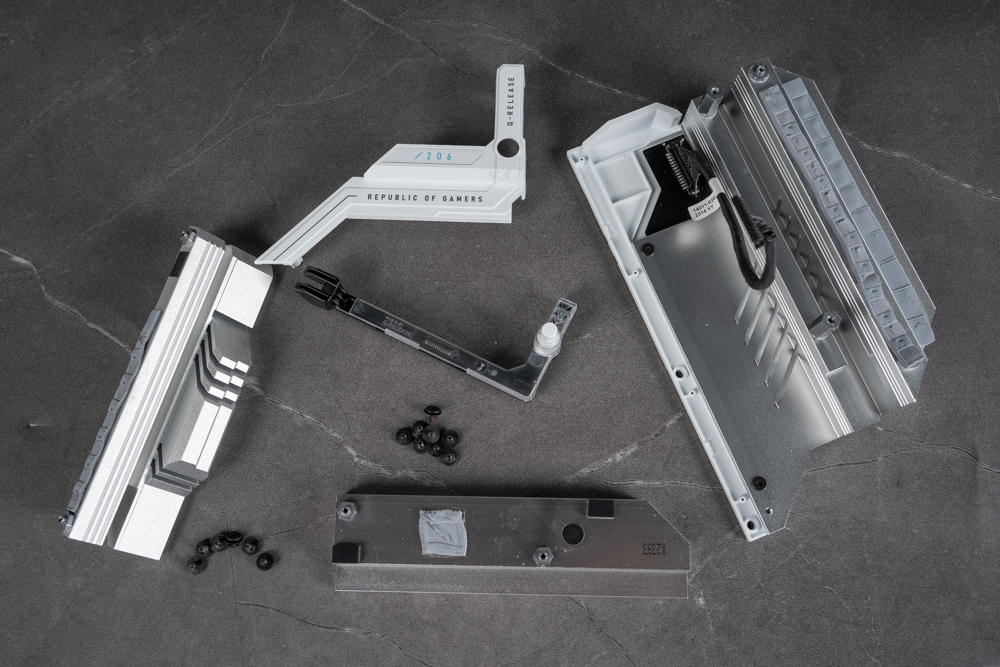
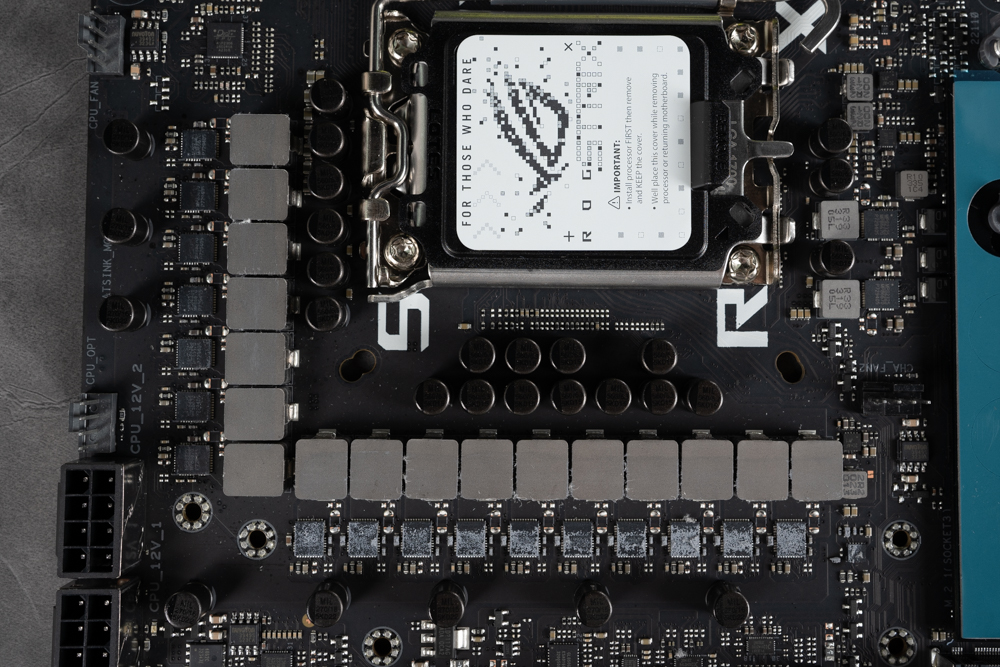
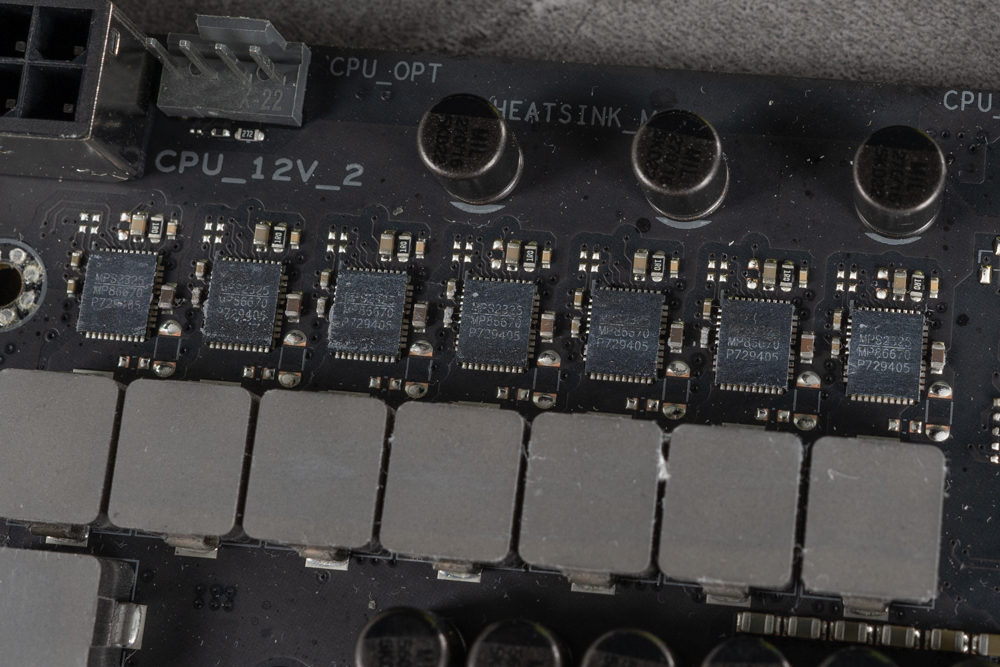
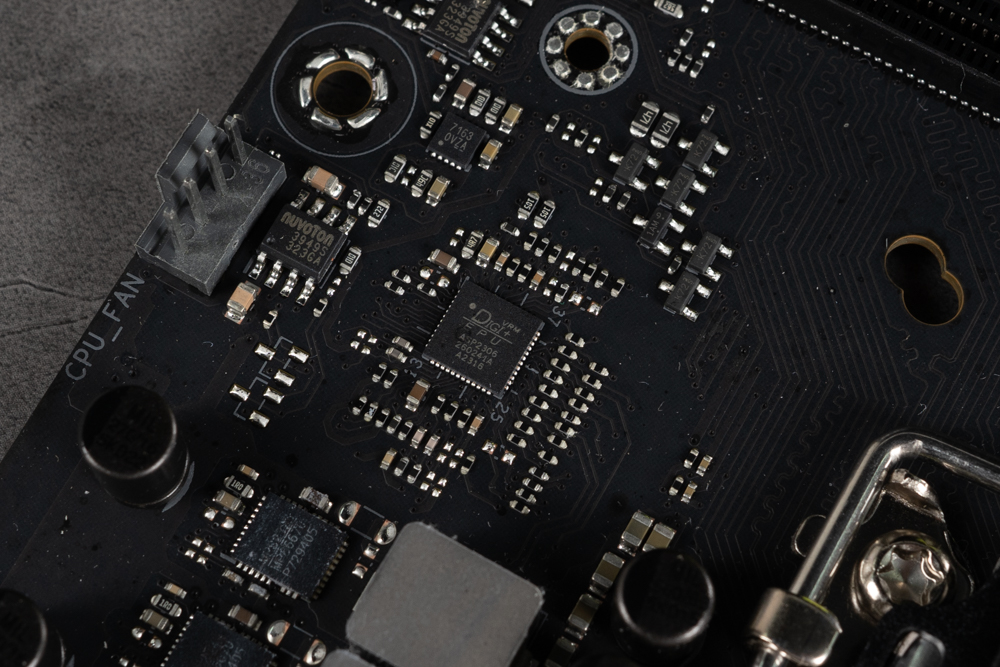
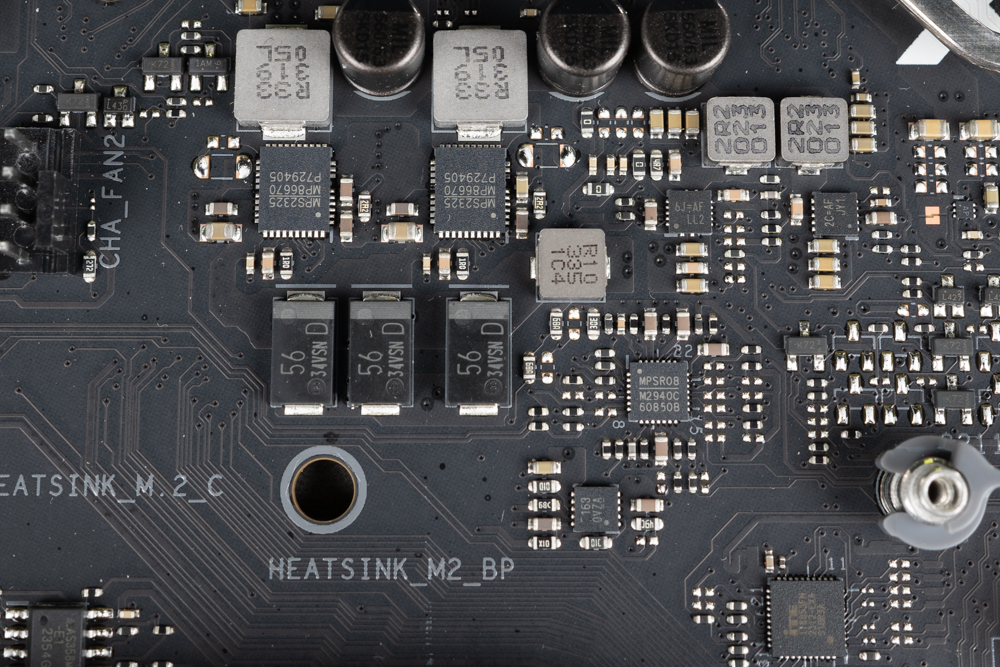
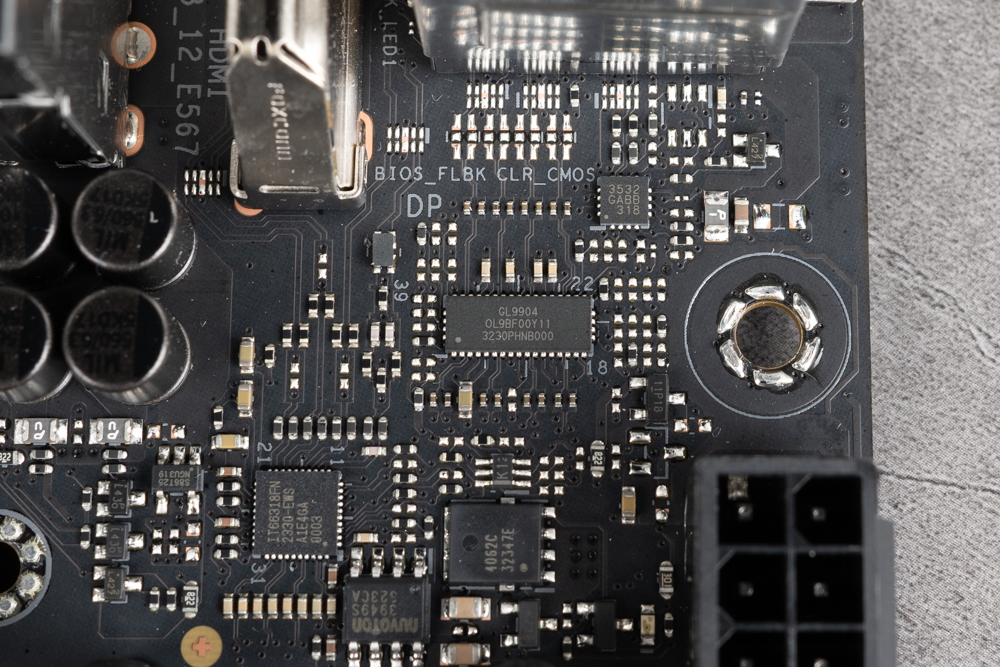
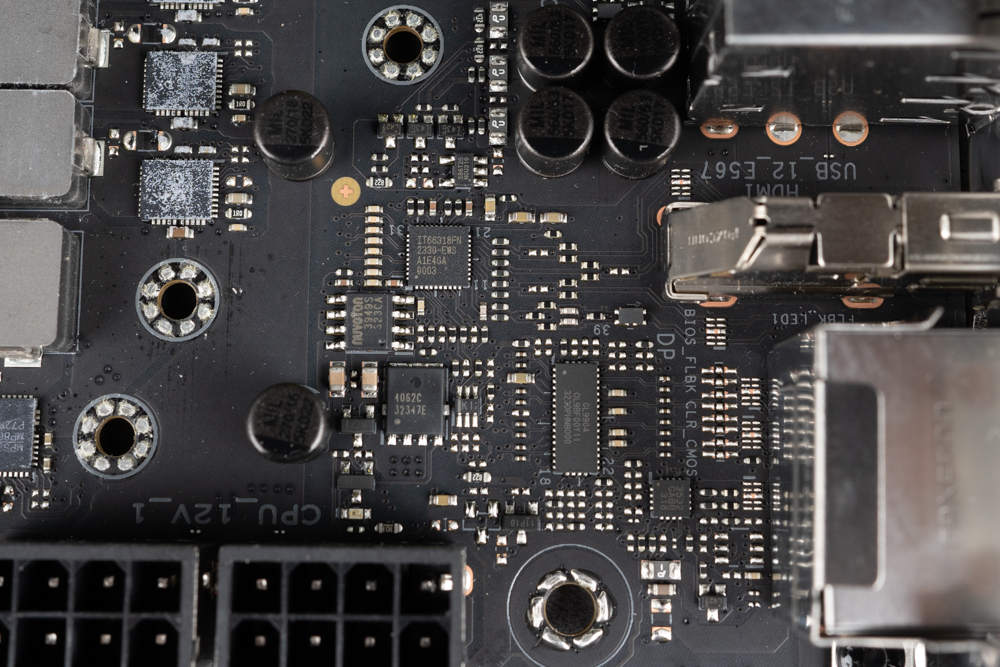
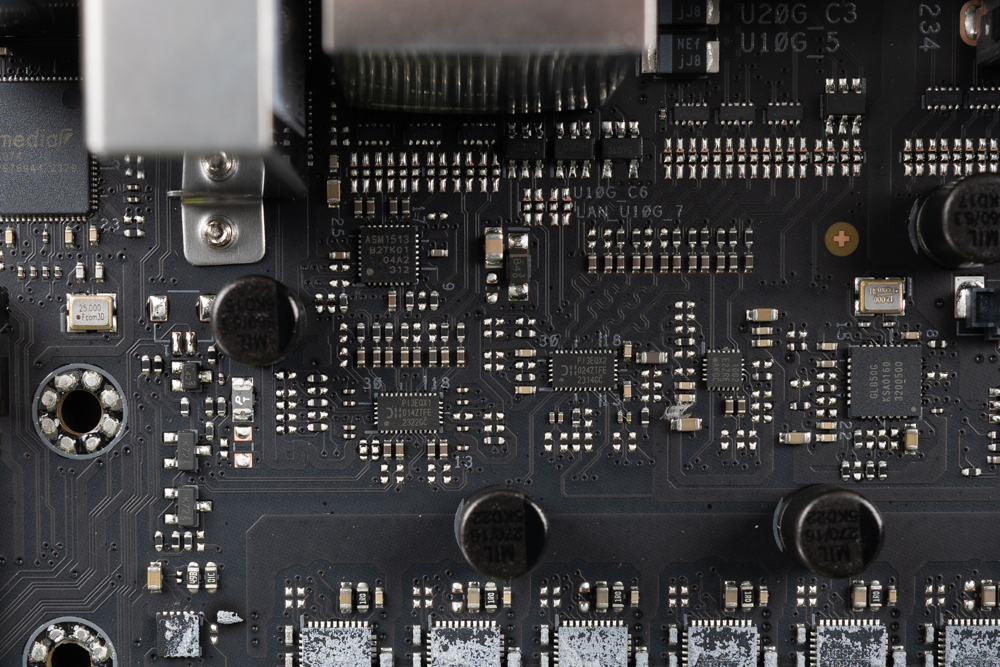
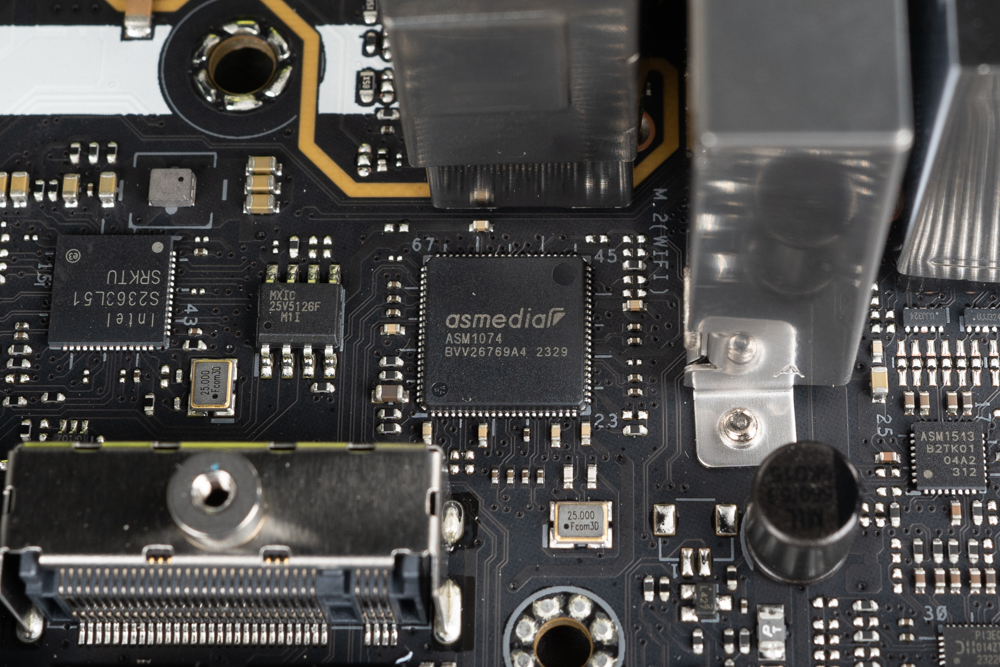
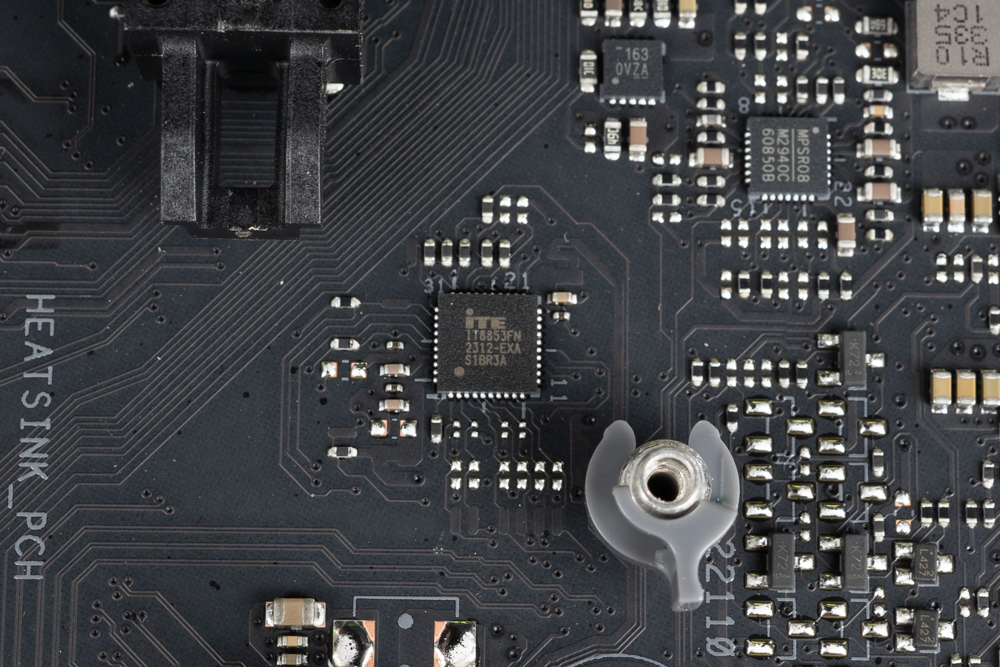
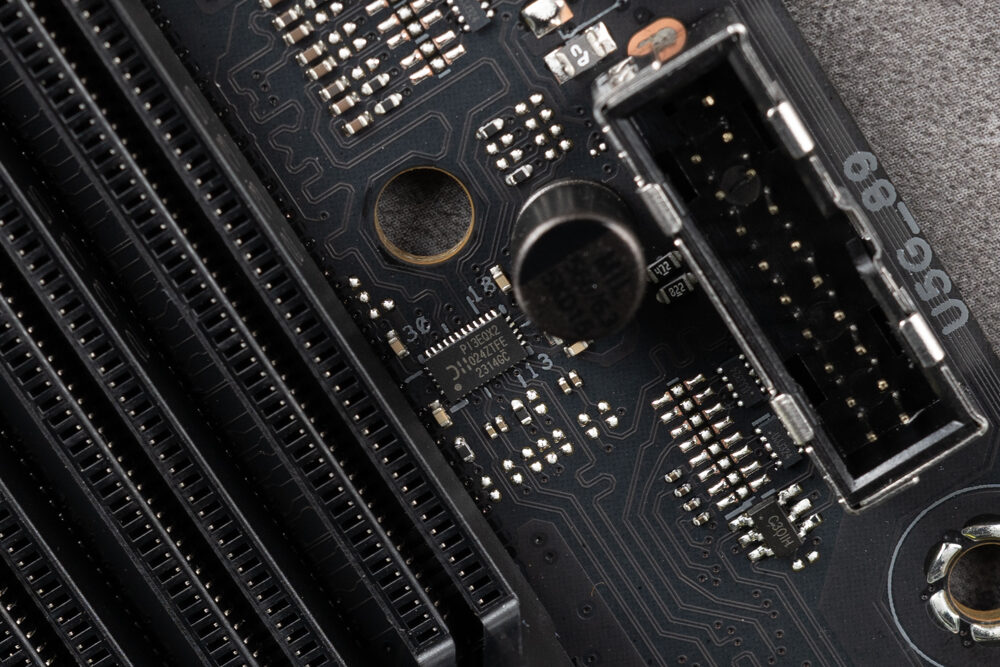
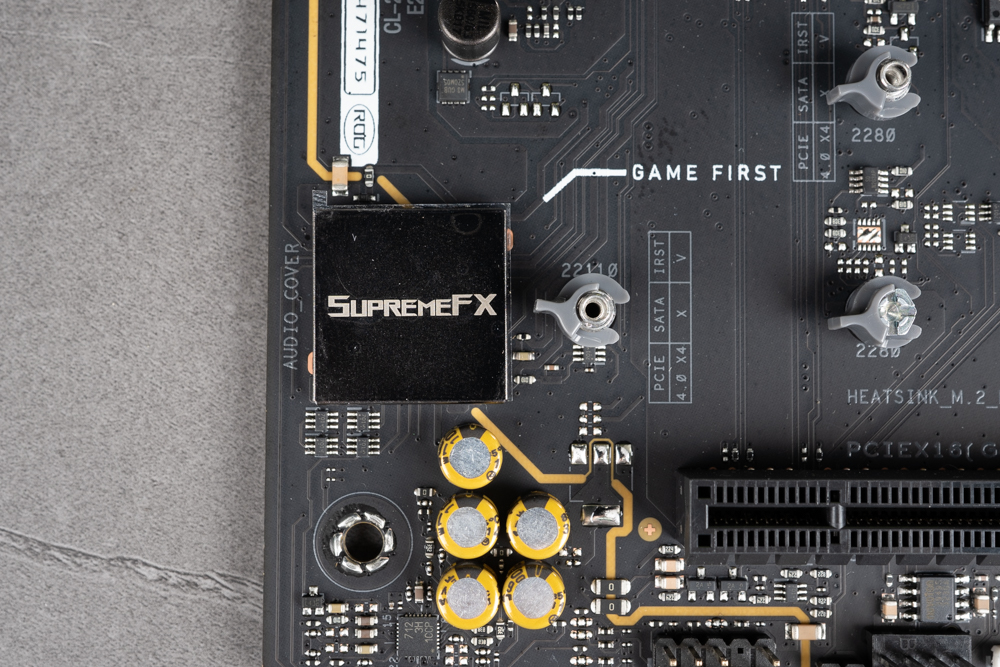
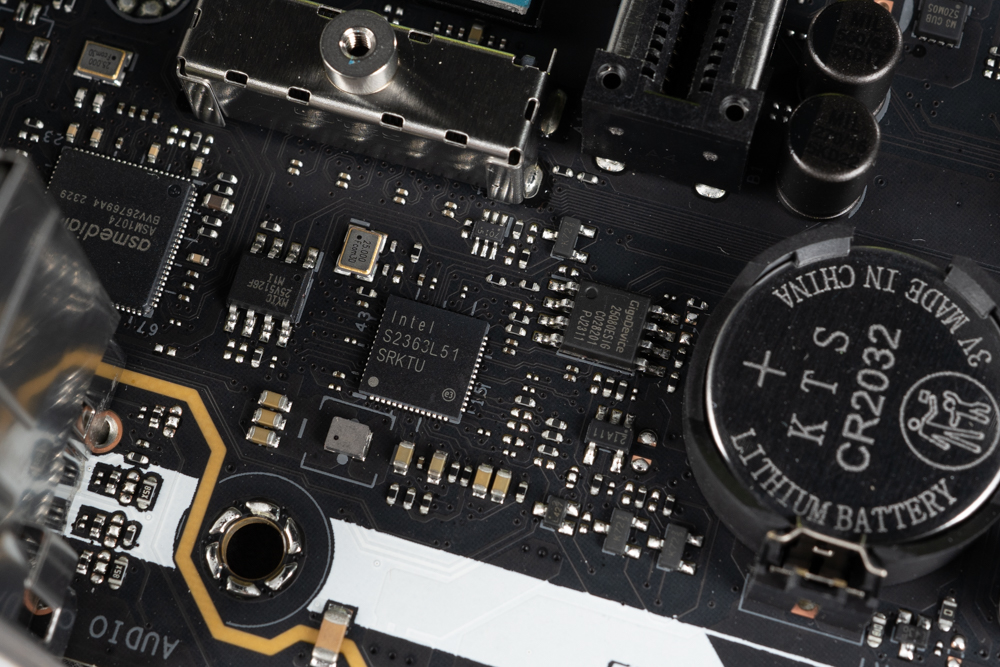
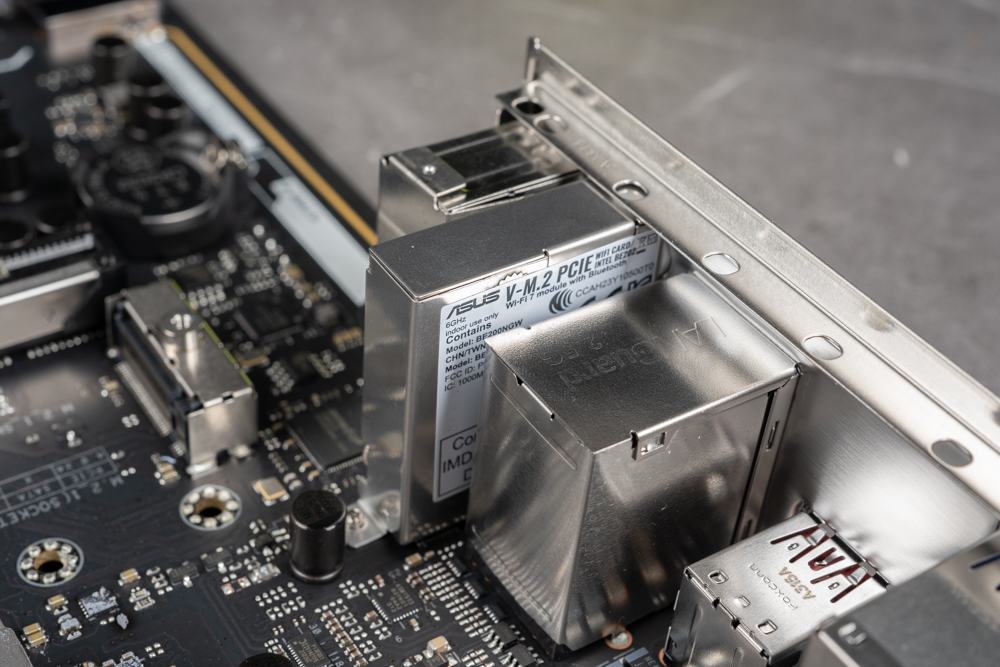
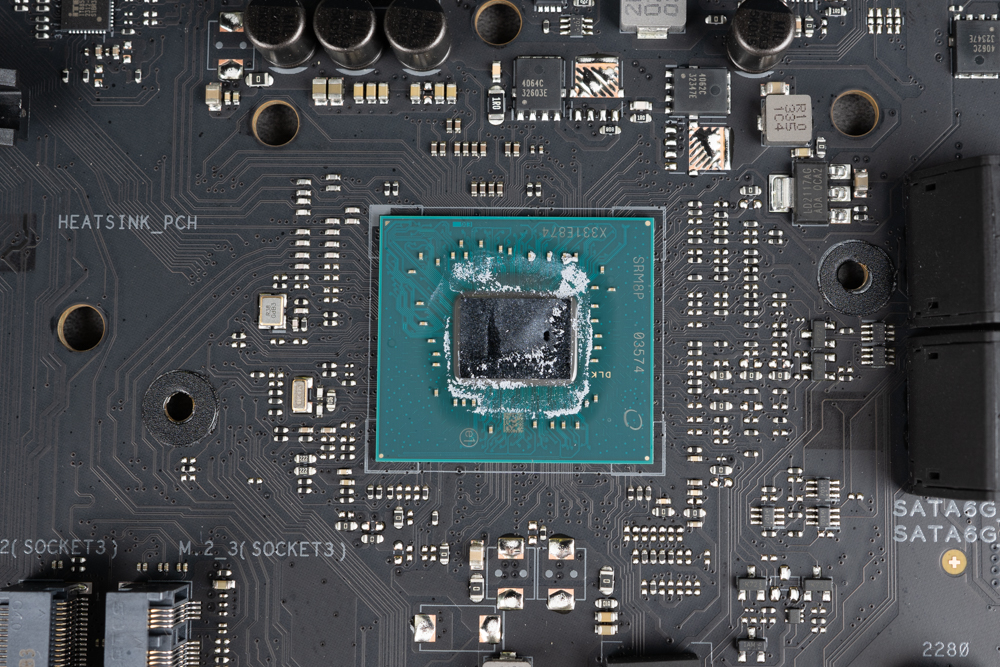
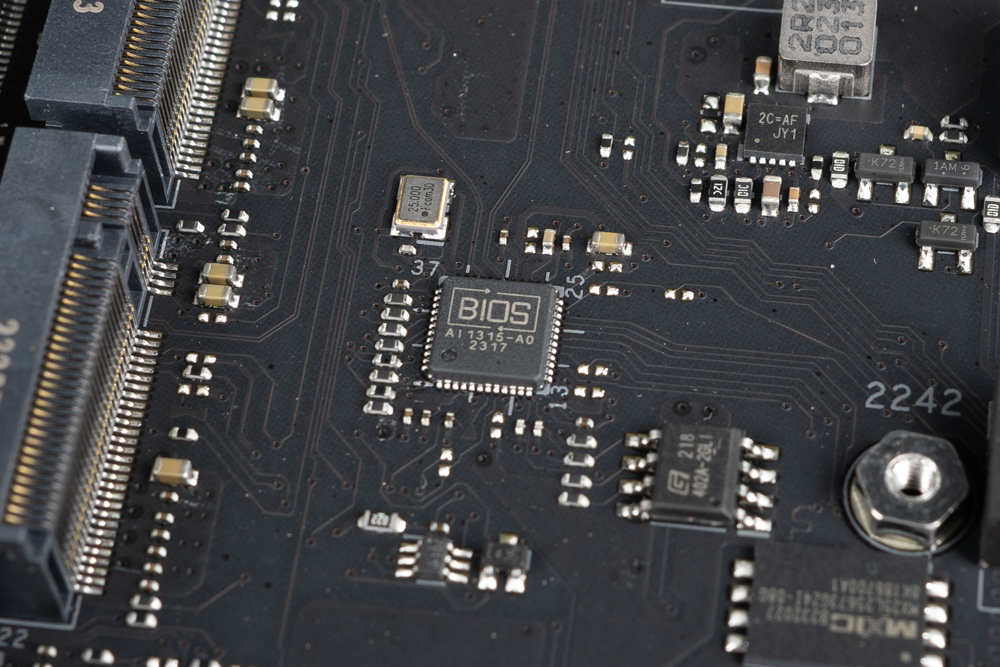
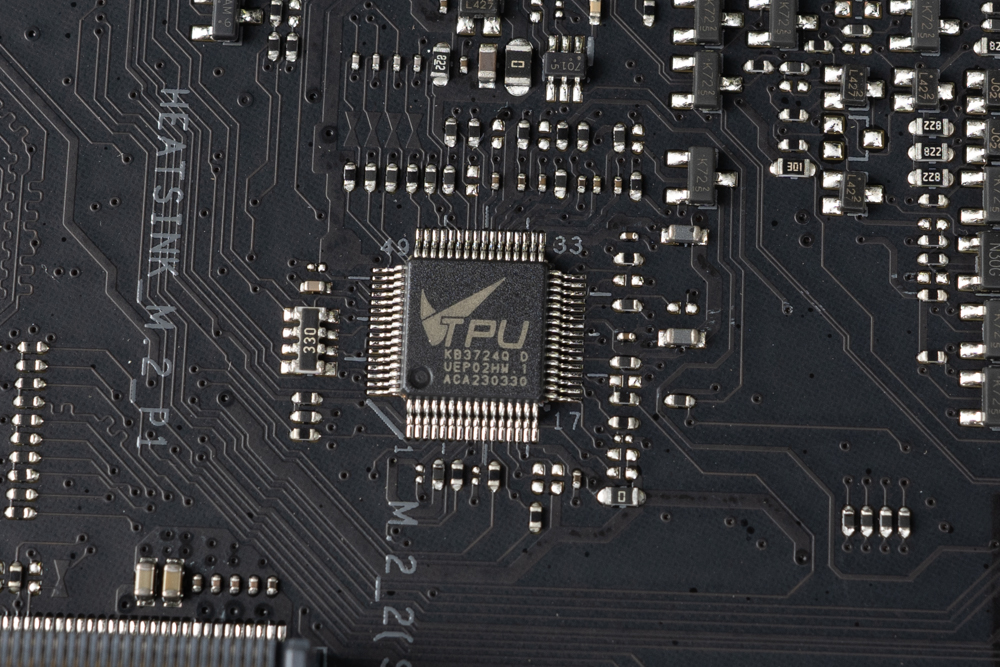
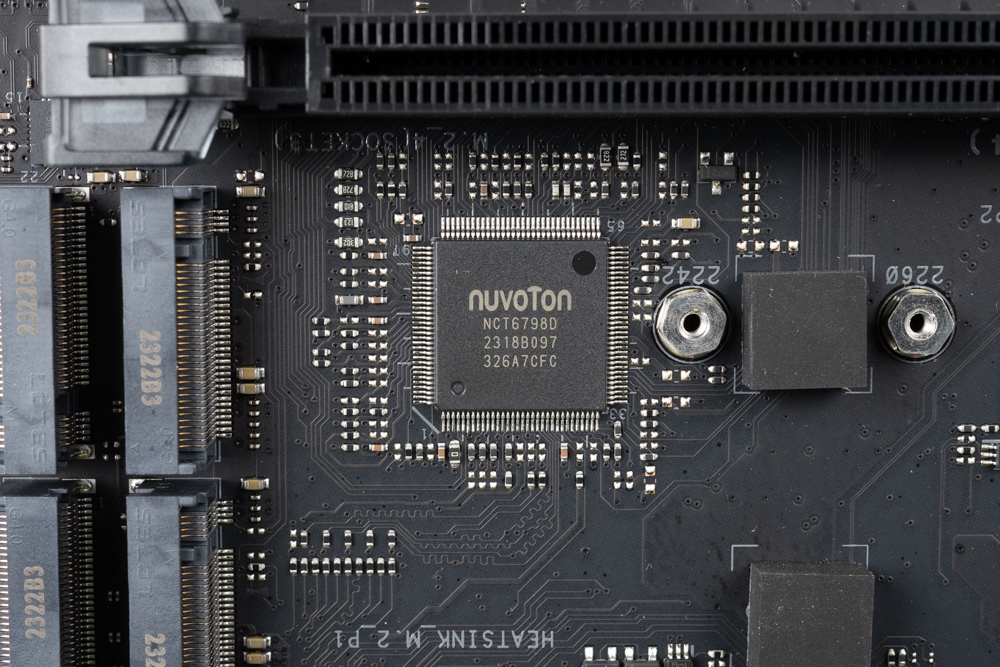
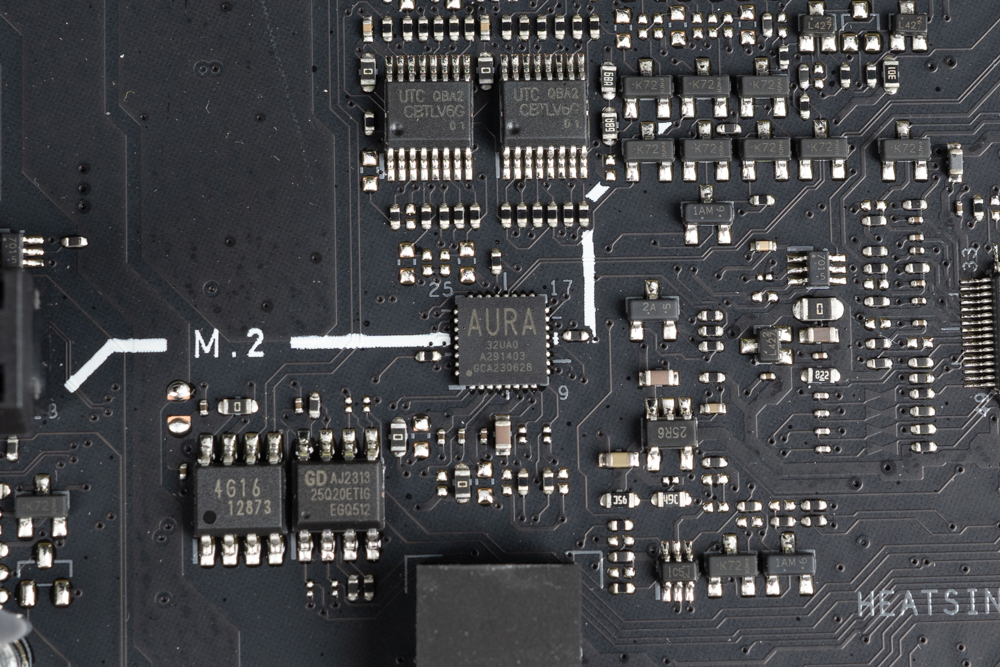
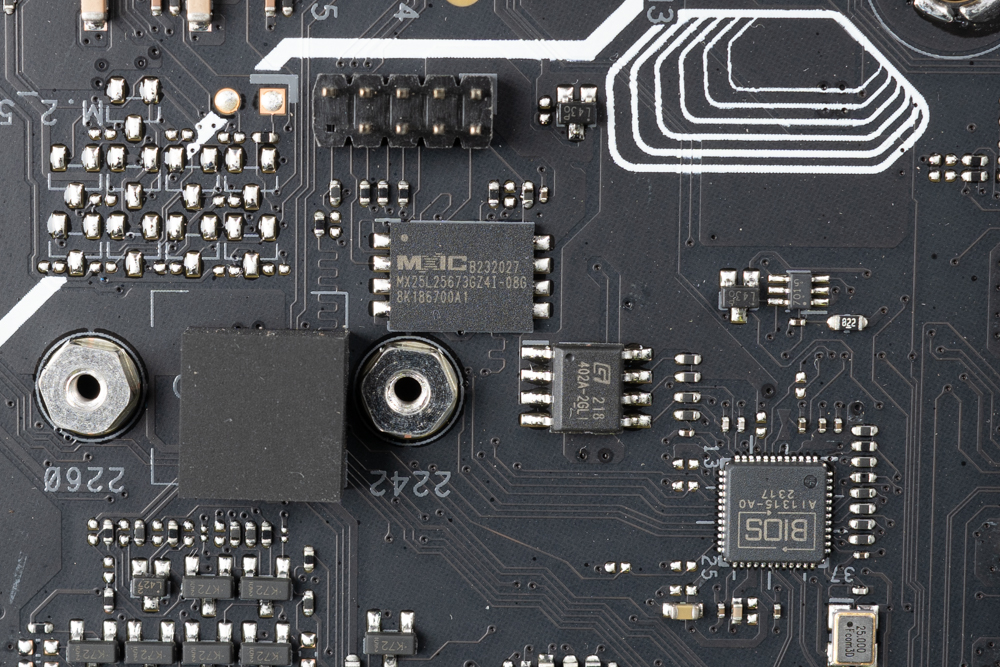
Small items of faith and auxiliary application tools | ROG RG-07 high-efficiency thermal paste
Specifications:
- Thermal Conductivity: 2.5 W/mK
- Density: 2.6 g/cm³
- Operating Temperature Range: -40 to 150°C
- Net Weight: 3g
ROG has introduced its inaugural high-efficiency thermal paste, distinguished by its low viscosity and non-conductive properties, ensuring ease of use for gamers. This product also includes a branded scraper and additional application tools, designed to simplify the application process. This innovative thermal paste is tailored to enhance the user experience, making it less daunting for players to apply and manage their system’s thermal solutions.
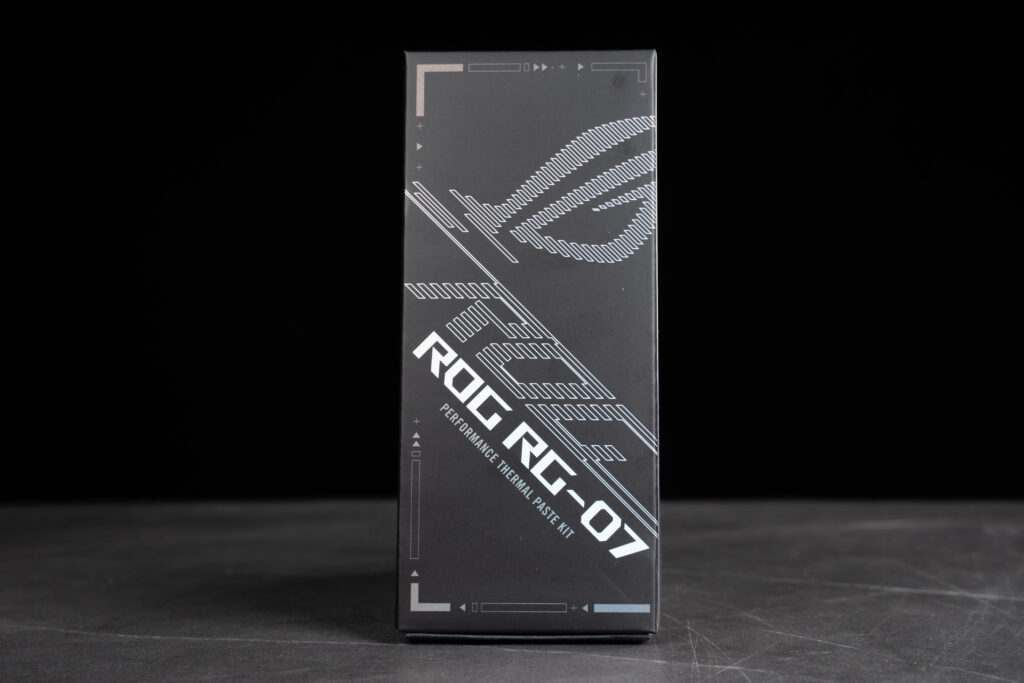
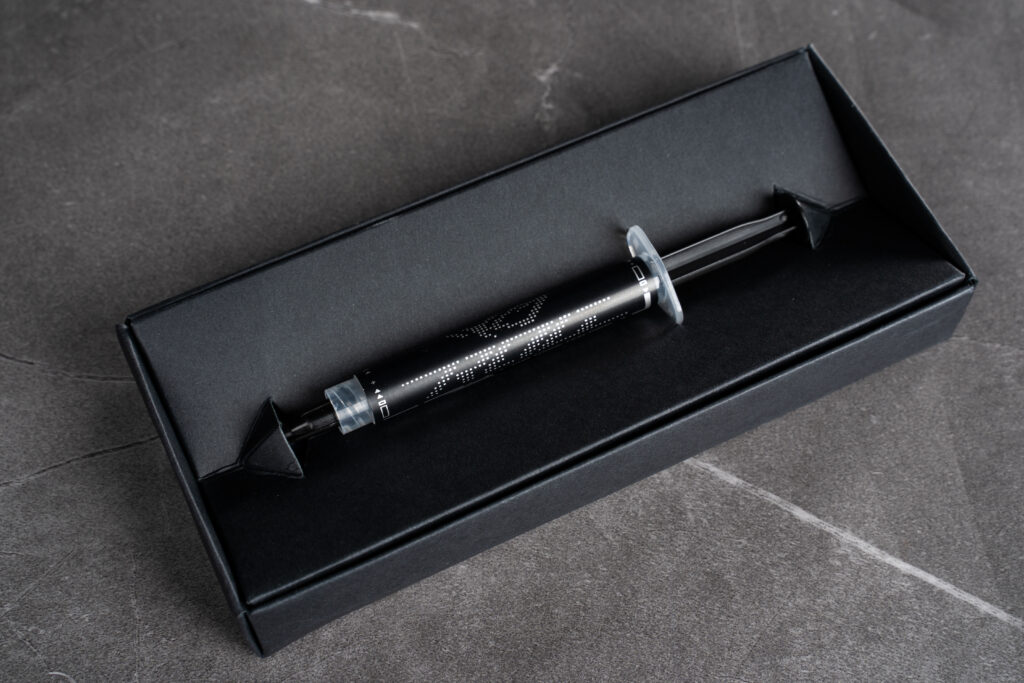
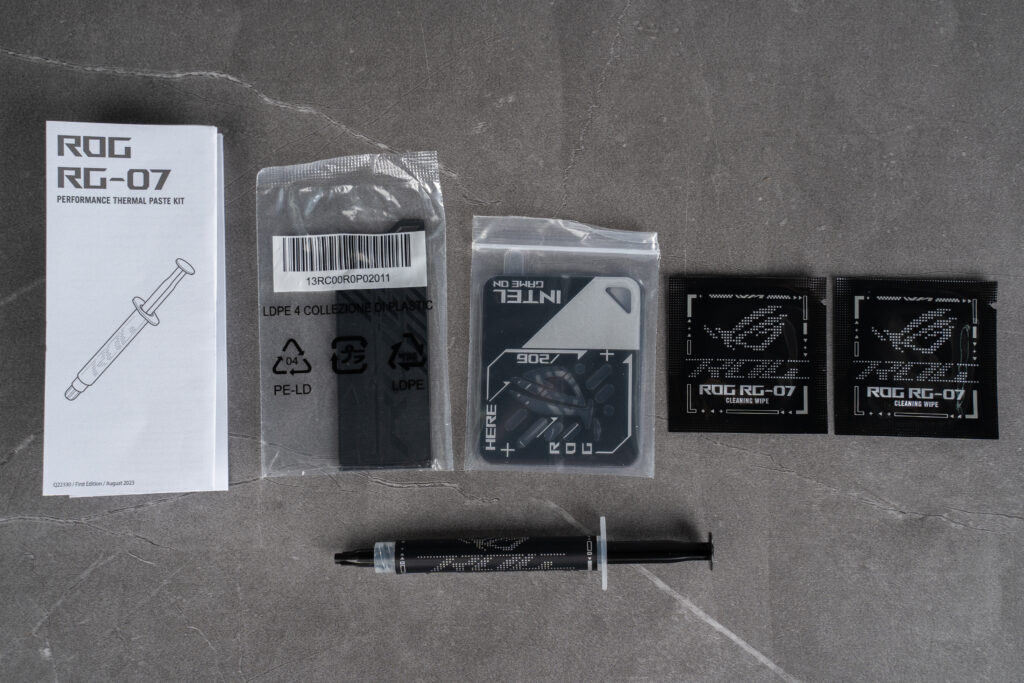
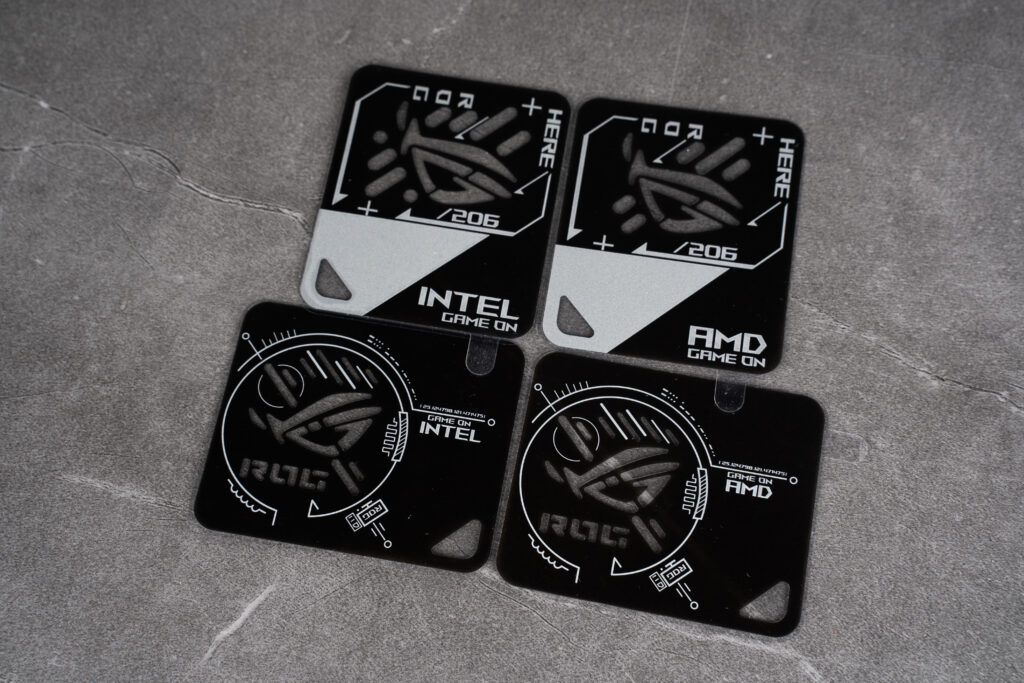
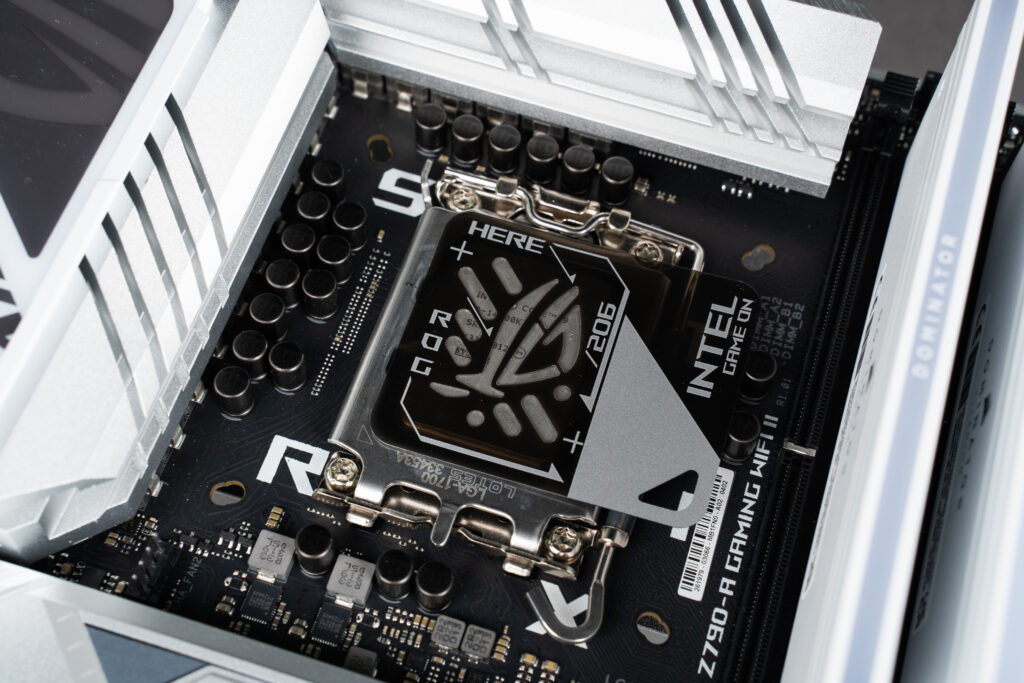
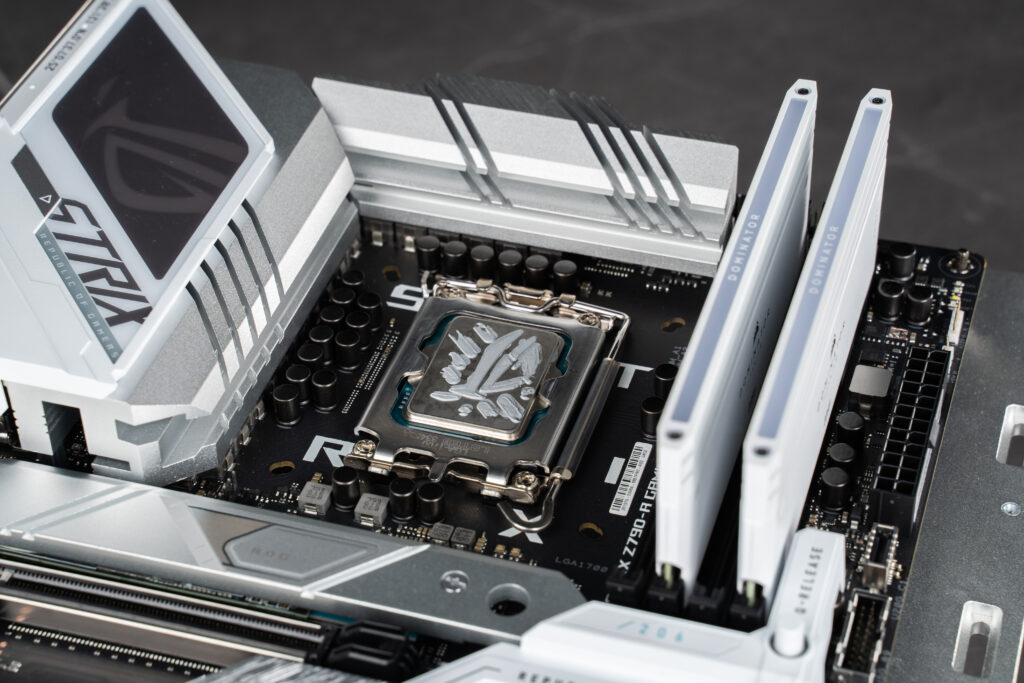
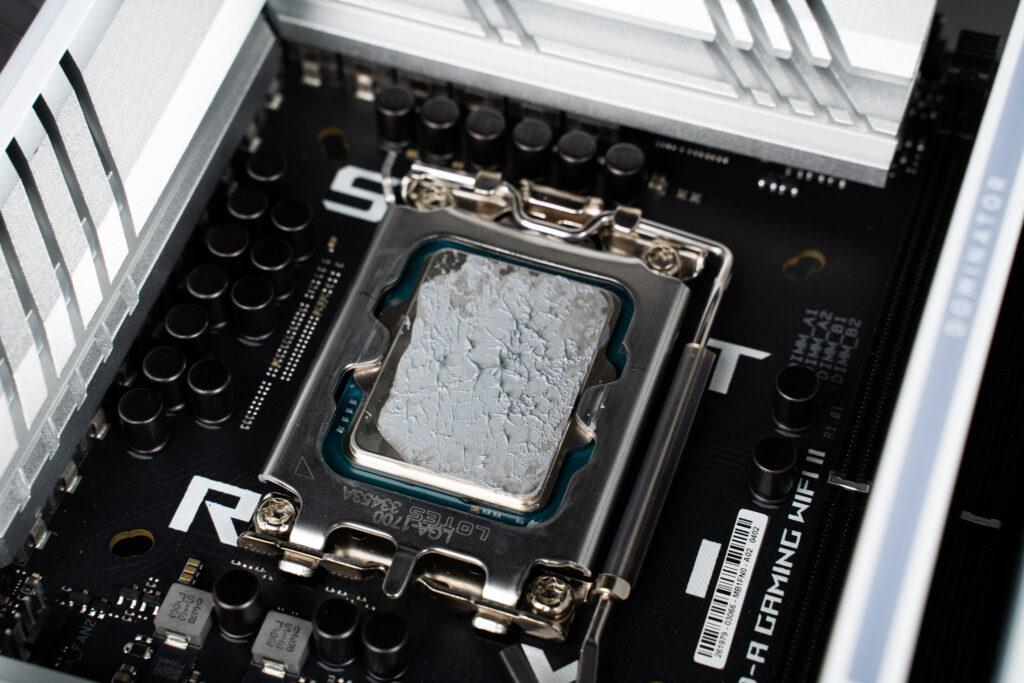
With the support of AI chip, body prediction and overclocking are taken to the next level | ROG STRIX Z790-A GAMING WIFI II
The ROG STRIX Z790-A GAMING WIFI II comes equipped with ASUS’ proprietary AI overclocking chip, boasting features such as AI automatic overclocking and CPU SP (Silicon Potential) body prediction. This advanced technology was previously showcased in our unboxing and review of the TUF GAMING Z790-PRO WIFI, where it was tested with the Intel i9-14900K processor. The key takeaway from these tests is that effective heat dissipation is crucial. With adequate cooling, this AI overclocking can yield a noticeable performance improvement, highlighting the motherboard’s capability to enhance system speeds intelligently.
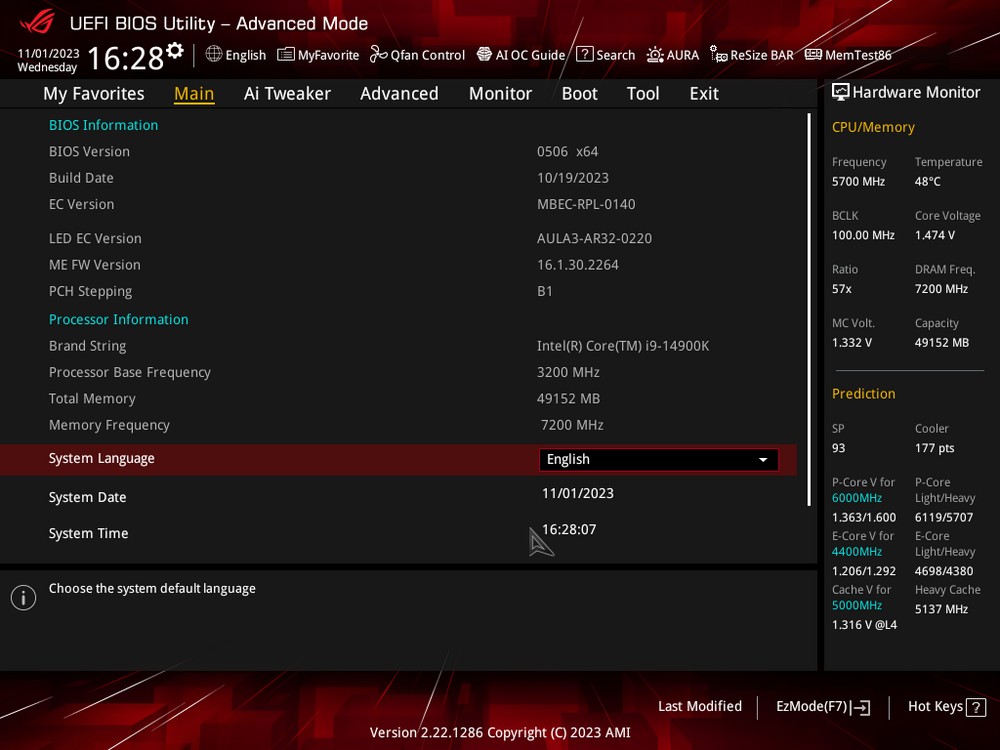
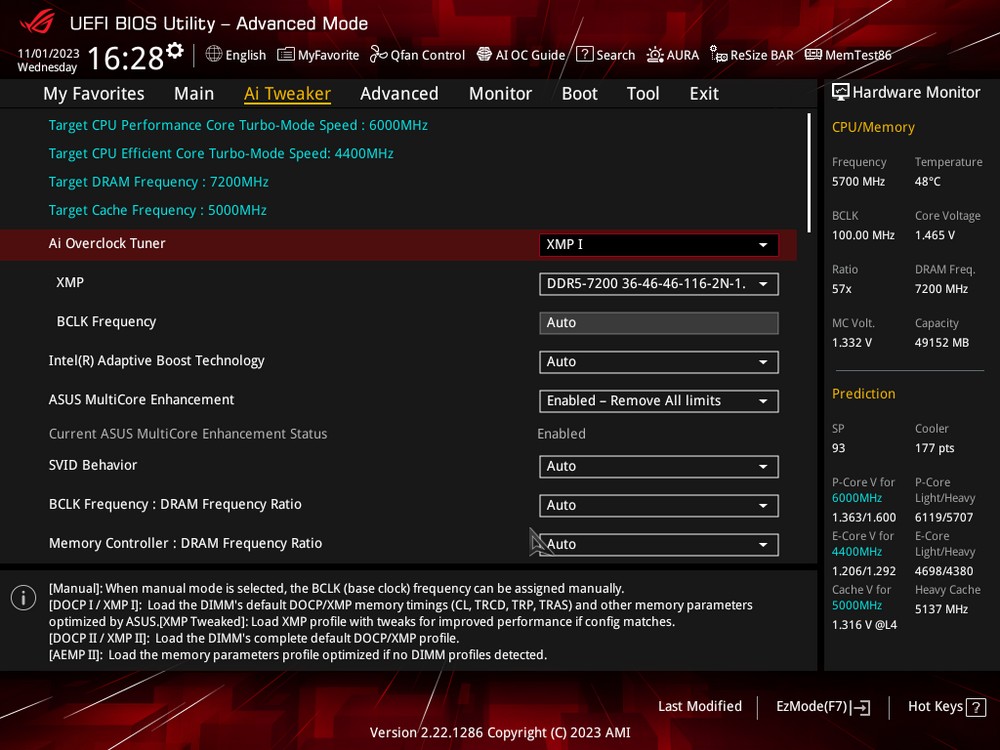

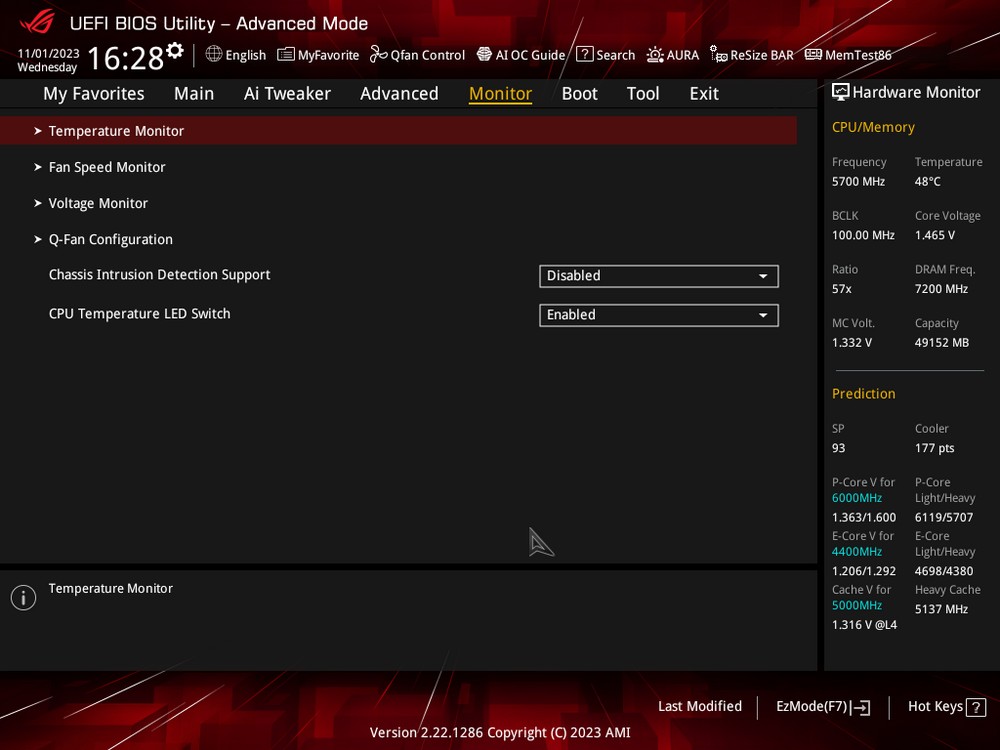
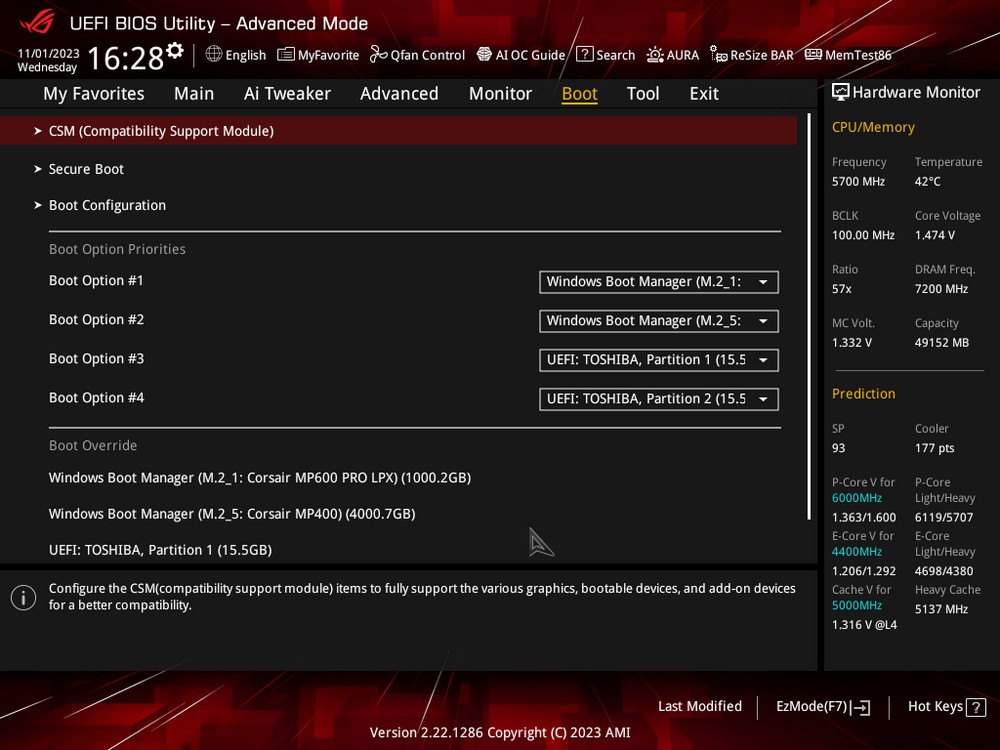
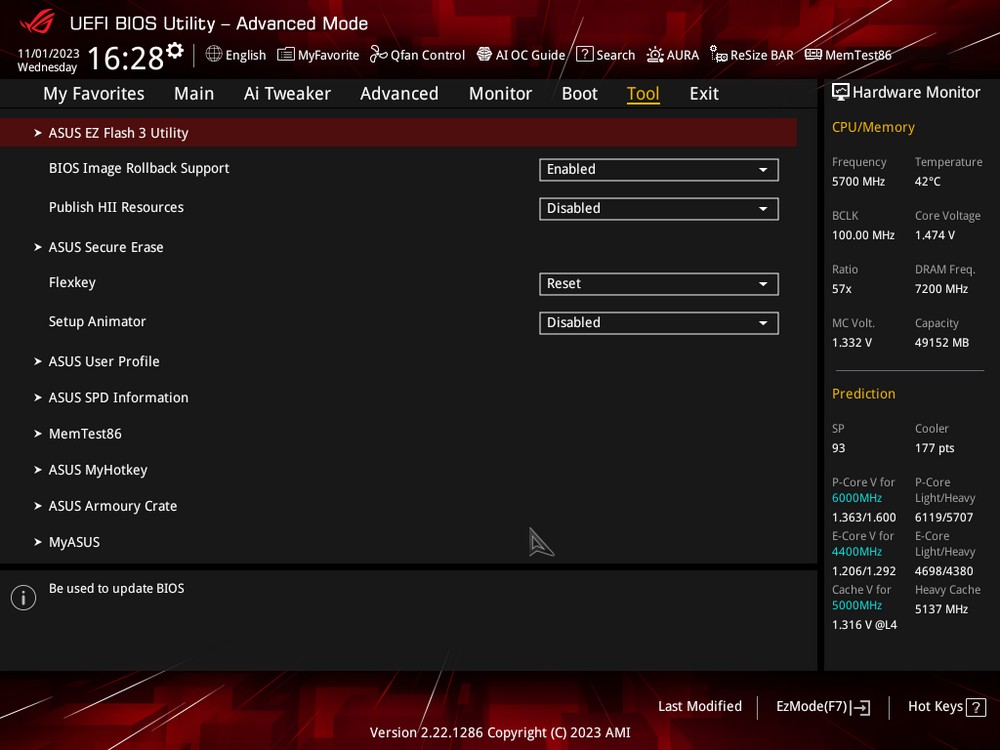
I9-14900K is easy to control | ROG STRIX Z790-A GAMING WIFI II performance test
The primary benchmarks for evaluating the ROG STRIX Z790-A GAMING WIFI II motherboard encompass tests on the CPU, memory, and SSD. The setup features the latest Intel Core i9-14900K processor, coupled with 24GBx2 CORSAIR DOMINATOR TITANIUM DDR5-7200 memory. To ensure optimal performance, a 360mm integrated water cooler and a Radeon RX 7800 XT graphics card are part of the configuration. The motherboard runs on the most recent BIOS version, 0506. For this test, XMP is activated, and the power limit is unlocked to leverage the full potential of the components (Note: AI overclocking is not enabled).
Test Configuration:
- CPU: Intel Core i9-14900K
- Motherboard: ASUS ROG Strix Z790-A GAMING WIFI II, BIOS version 0506
- Memory: 24GBx2 CORSAIR DOMINATOR TITANIUM DDR5-7200
- GPU: ASRock Radeon RX 7800 XT Steel Legend 16GB OC (Adrenaline 23.10.2)
- Storage: CORSAIR MP600 PRO LPX 1TB + CORSAIR MP400 1TB (for games)
- Cooling System: Lianli GALAHAD II LCD 360
- PSU: Seasonic Focus 1000W
- OS: Windows 11 Pro 23H2
The processor information is monitored using CPU-Z, showcasing the Intel i9-14900K and BIOS version 0506. The memory runs at 7200MHz in dual-channel mode. Performance benchmarks reveal a single-thread score of 929.4 and a multi-thread score of 17241.9 in CPU Bench.
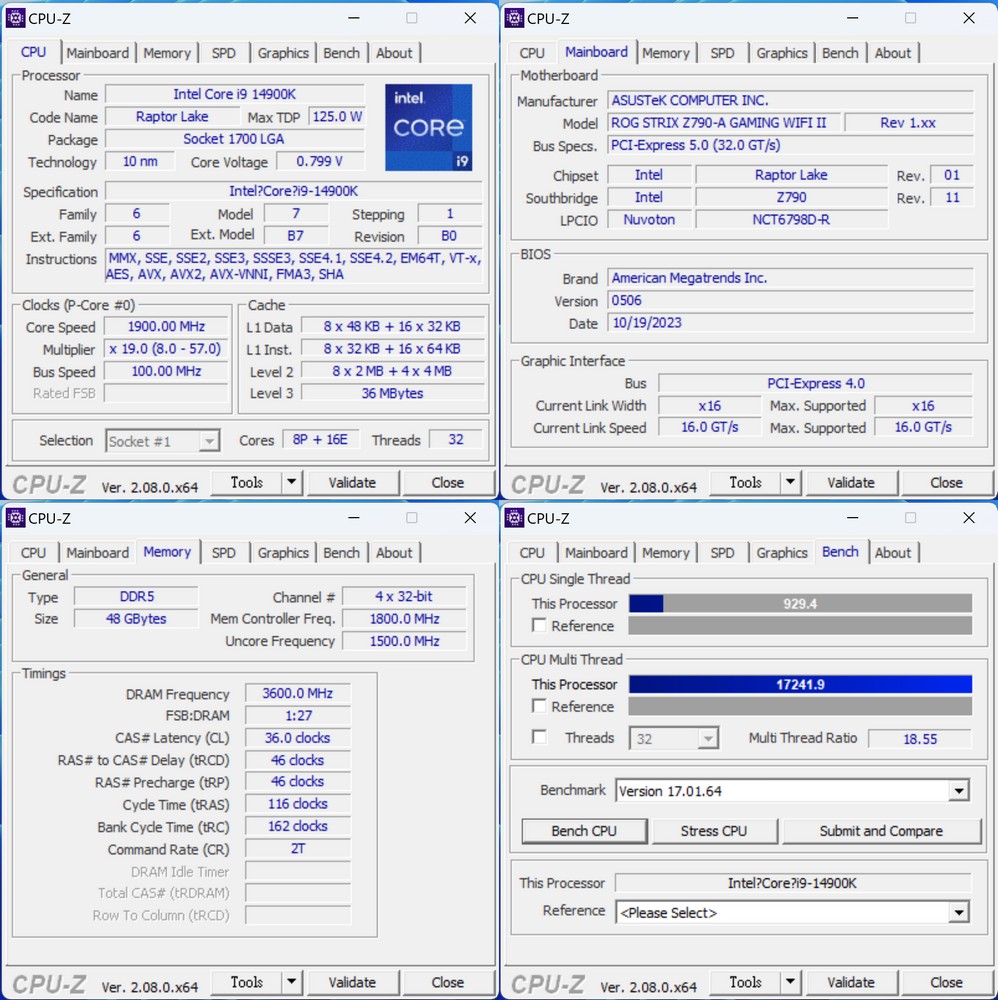
The graphics card information is verified using GPU-Z. The Radeon RX 7800 XT in the test setup operates on a PCIe 4.0 x 16 interface. It is running with the driver version Adrenaline 23.10.2. This setup ensures that the graphics card’s performance is accurately assessed, providing a comprehensive understanding of its capabilities within the system configuration.
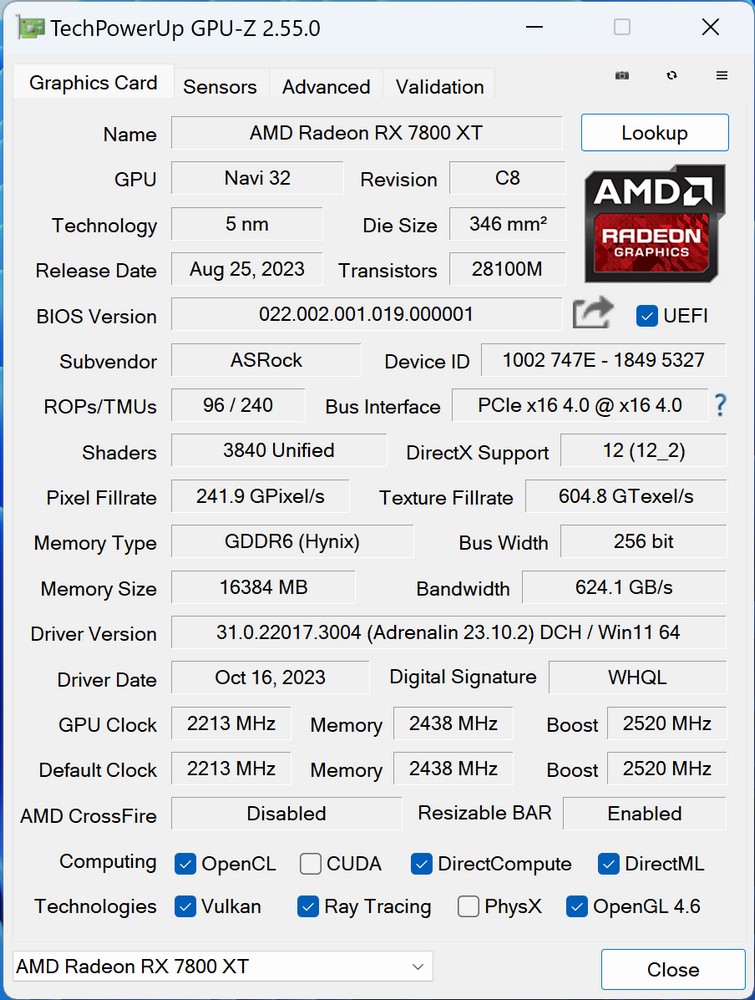
MAXON recently released Cinebench 2024, an update that utilizes the Redshift rendering engine from Cinema 4D for benchmark tests. This latest version is capable of evaluating both CPU and GPU rendering performance. Compared to its predecessor, Cinebench R23, the memory requirements for Cinebench 2024 have tripled, aligning with the demanding memory needs of modern, intensive projects. Furthermore, the computational tasks and the use of an updated instruction set have been increased by a factor of six, offering a more rigorous and relevant test for today’s complex and demanding creative projects.
In the Cinebench 2024 benchmarks, the Intel i9-14900K achieved scores of 130 in single-core, 2221 in multi-core, and 10896 in GPU testing. For comparison, in Cinebench R23, it scored 2197 in single-core and 40174 in multi-core tests.
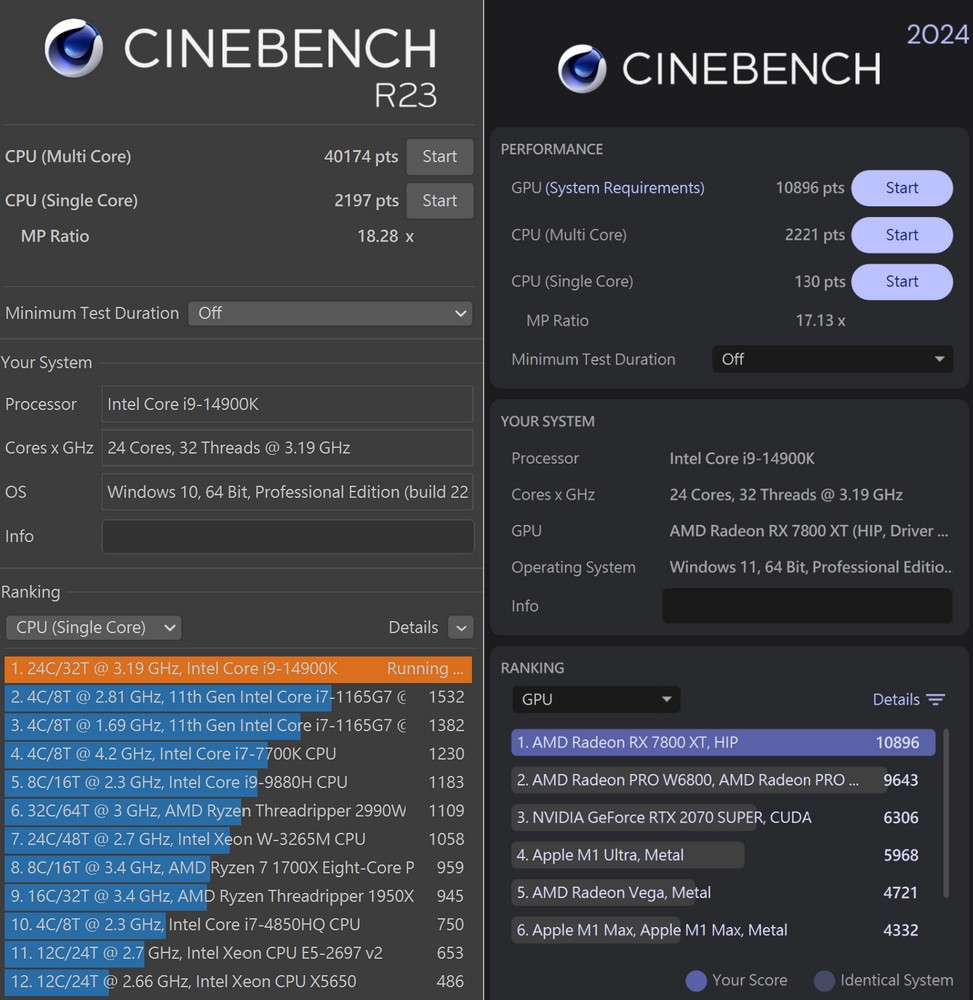
In the 7-ZIP benchmark, which assesses the performance of compression and decompression processes, results are expressed in terms of GIPS (Giga Instructions Per Second). A higher GIPS score indicates superior performance. In this specific test, the total time taken was 55.390 seconds. The compression performance achieved a rating of 188.542 GIPS, while the decompression performance scored 226.493 GIPS. The combined overall rating for this system was 207.518 GIPS.
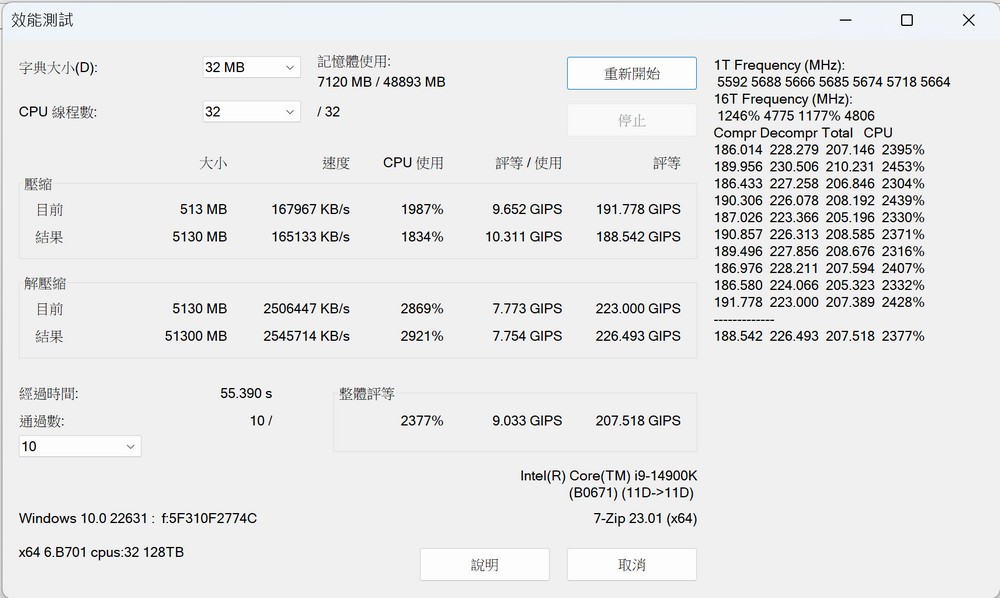
The 3DMARK CPU Profile benchmark focuses on evaluating the CPU’s capabilities in handling physical operations and custom simulation tasks. It tests the CPU’s performance across various thread counts – specifically at 1, 2, 4, 8, 16, and the maximum number of threads. This diversity in thread counts corresponds to the different types of CPUs utilized in various games and applications, each with its own threading requirements. This test offers a broad perspective on CPU performance in different usage scenarios. For instance, the Max threads score reflects the CPU’s total capacity, which is particularly relevant for tasks like rendering, simulations, or scientific computations.
In this benchmark, the Intel i9-14900K achieved a score of 17237 in Max threads, highlighting its robust overall performance. For gaming-relevant metrics, it scored 9013 and 4867 in the 8-thread and 4-thread tests, respectively, showcasing its capability in scenarios common in gaming environments.
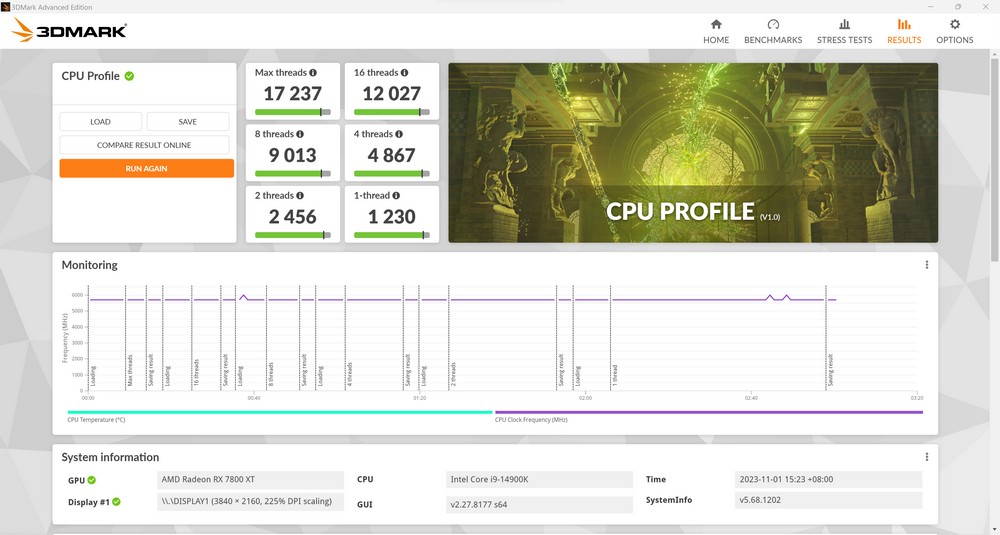
In the 3DMARK Time Spy benchmark, which is designed for 2K resolution testing and utilizes DirectX 12, the performance of the Intel i9-14900K and the Radeon RX 7800 XT was rigorously assessed. The i9-14900K processor achieved an impressive score of 22249 points, while the Radeon RX 7800 XT graphics card scored 19519 points. This benchmark is a key indicator of the system’s capability in handling high-resolution, DirectX 12 gaming scenarios.
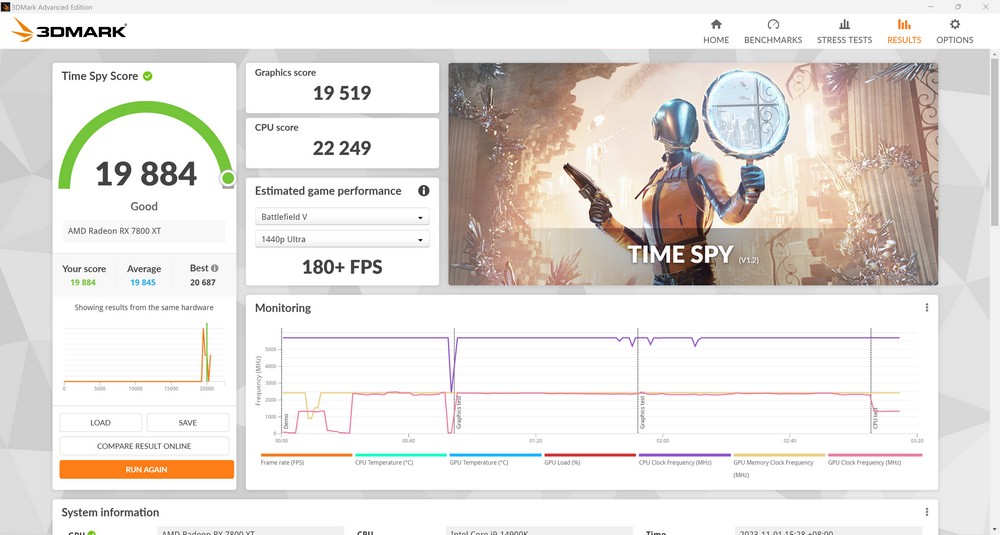
In the 3DMARK Fire Strike Ultra benchmark, conducted at 4K resolution and utilizing DirectX 11, the CPU physics performance was assessed, resulting in an impressive score of 55504 points. The GPU performance was evaluated, yielding a score of 12469 points. This benchmark offers insights into the system’s ability to handle demanding 4K gaming scenarios with DirectX 11 graphics.
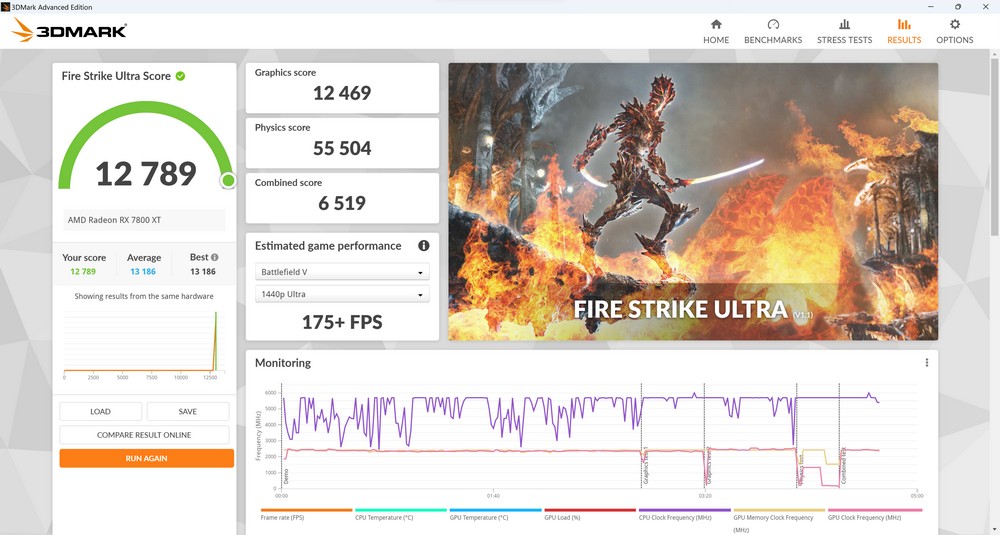
CrossMark, a versatile testing tool developed by BAPCo, offers comprehensive assessments across multiple platforms, including Windows, iOS/iPadOS, macOS, and Android. The tests encompass three distinct categories: productivity, creative content work, and system response. These evaluations encompass tasks such as document editing, simulated spreadsheets, web page interactions, and the speed of response during activities like browsing, photo editing, photo organization, video editing, as well as program and file opening.
The Intel i9-14900K achieved an impressive overall score of 2639 points in the CrossMark benchmark. This score comprises 2397 points in productivity, 2889 points in creative content work, and 2682 points in system responsiveness. These results provide valuable insights into the CPU’s capabilities across a range of tasks and usage scenarios.
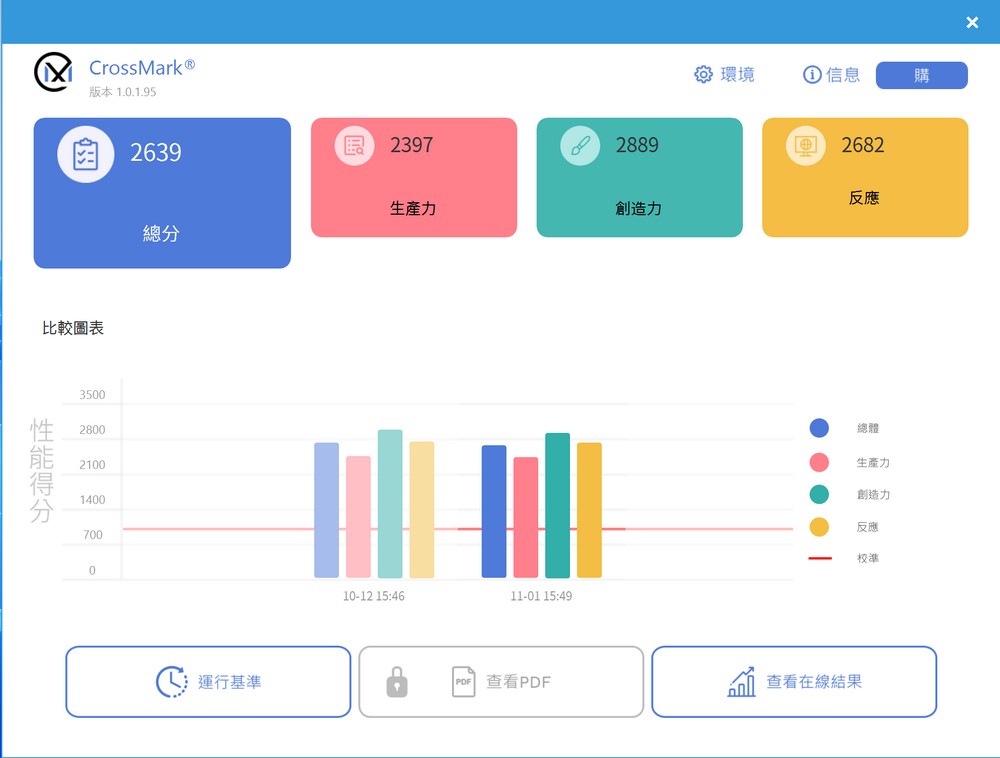
The V-Ray 5 Benchmark is a dedicated tool for evaluating CPU rendering performance, employing three distinct scenarios to assess processing capabilities. The Intel i9-14900K impressively achieved a total score of 26835 points in this benchmark. This score reflects the CPU’s rendering proficiency across a range of scenarios, showcasing its computational power for demanding rendering tasks.
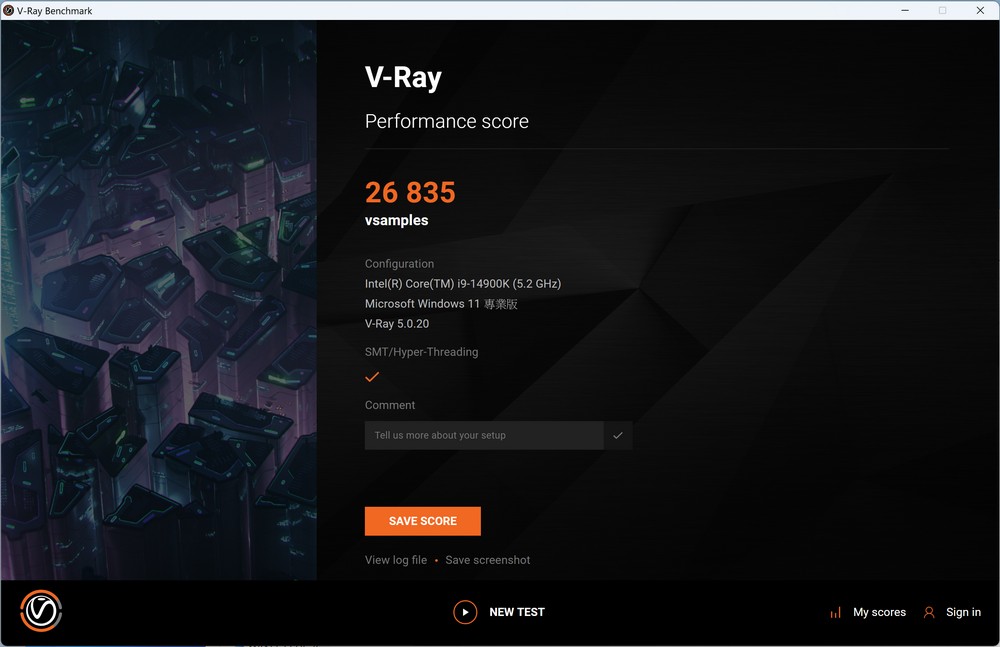
Geekbench 6 is a comprehensive benchmark tool designed to evaluate the overall performance of a processor. In response to the growing influence of AI technologies, it has incorporated tasks related to extended reality and machine learning. Furthermore, Geekbench 6 places a strong emphasis on real-life performance by incorporating real data, commonly used applications, and other relevant tests to ensure that the results align more closely with real-world performance. In this benchmark, the Intel i9-14900K achieved a single-core score of 3077 and a multi-core score of 22120. These scores reflect the CPU’s prowess in both single-threaded and multi-threaded tasks, providing a well-rounded assessment of its capabilities.
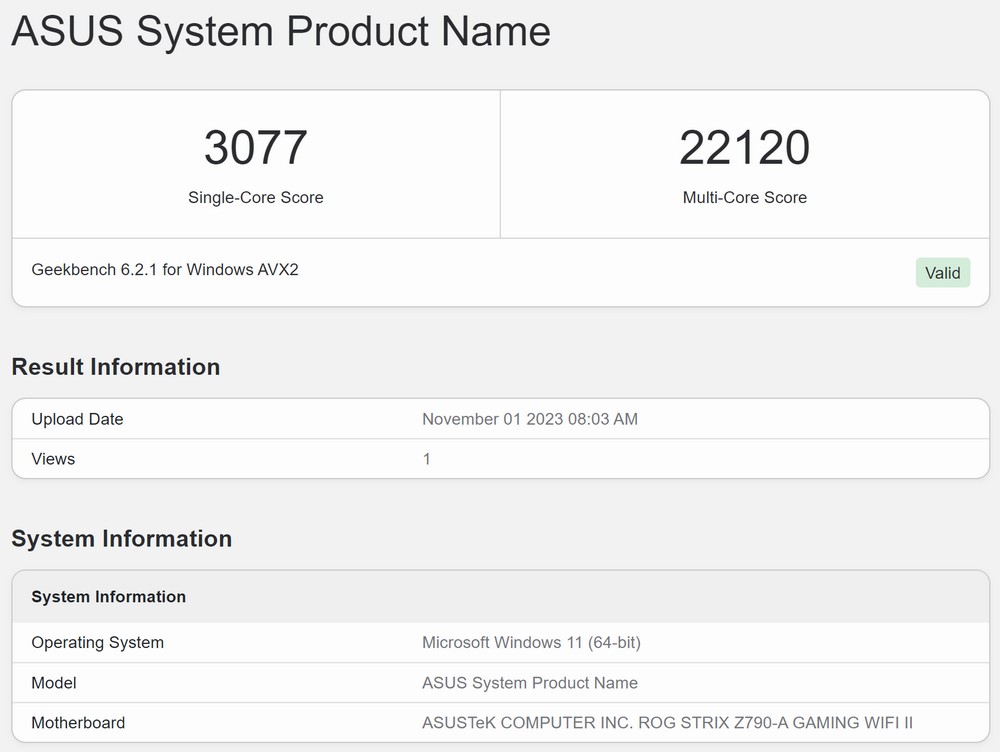
The SSD performance test conducted on the system disk utilized the CORSAIR MP600 LPX 1TB, which adheres to the PCIe 4.0 x4 specification. The SSD was installed in the M2_1 slot and tested with the motherboard’s provided heat sink for optimal performance and cooling.
To view detailed information about the SSD, CrystalDiskInfo was employed. The SSD operates at PCIe 4.0 x4, showcasing its high-speed capabilities.
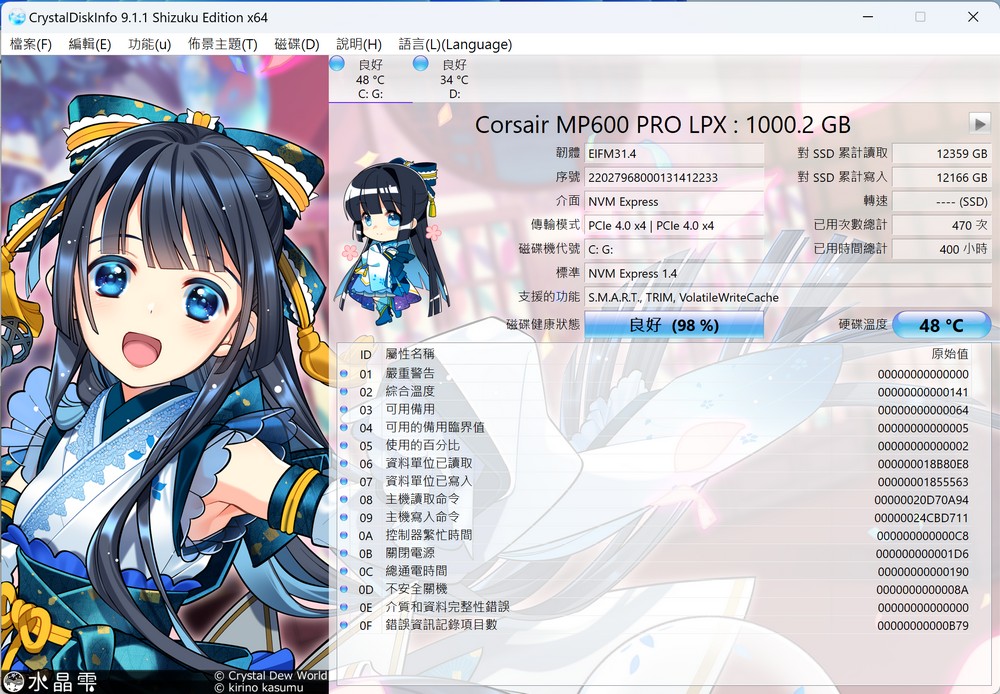
In the SSD performance testing, CrystalDiskMark was utilized to evaluate the performance of the NVMe SSD. Under the NVMe SSD profile, the results were quite impressive. The sequential reading speed reached an impressive 7044MB/s, showcasing the SSD’s rapid data retrieval capabilities. The sequential writing speed reached 5888MB/s, indicating efficient data storage and transfer capabilities.
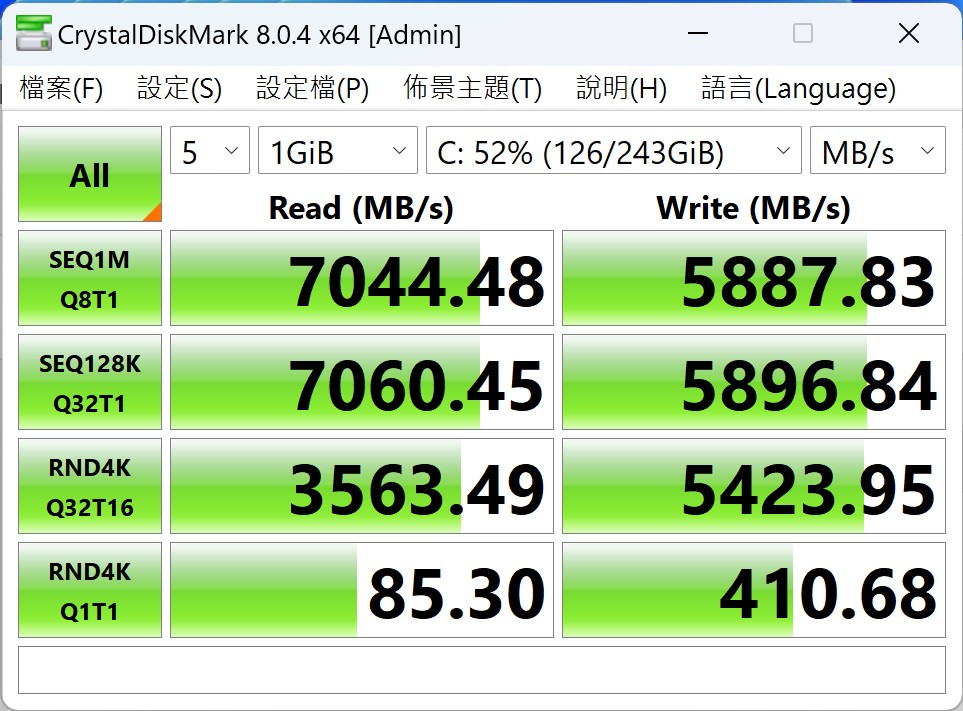
In the Aida64 cache and memory test, the performance of the CORSAIR DOMINATOR TITANIUM DDR5-7200 24GBx2 memory modules was evaluated. The results were highly impressive, showcasing the memory’s capabilities. It achieved a remarkable read speed of 104.16GB/s, indicating swift data retrieval. The memory exhibited exceptional write performance with a speed of 91409 MB/s, highlighting its efficiency in data storage. The copy speed reached an impressive 95236 MB/s, showcasing its ability to handle data transfer tasks effectively. Moreover, the memory demonstrated a low latency of 73.2ns, indicating rapid response times.
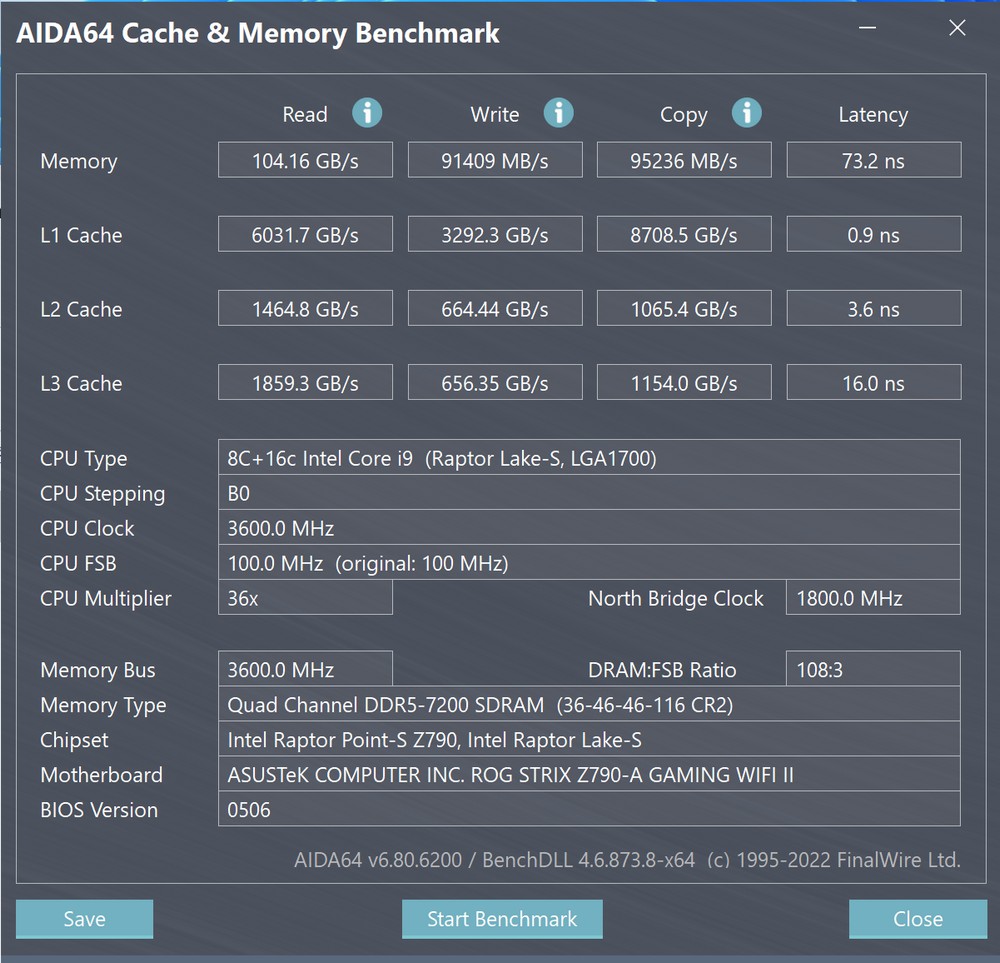
Introduction to Armcoury Crate Integrated Software
Armcoury Crate is a familiar software tool for those who have used ROG products, offering a comprehensive array of functionalities. When downloading this software, it is advisable to obtain it from the motherboard’s support page and ensure a stable network connection to avoid installation issues.
Armcoury Crate serves as a versatile utility with several core features. It provides essential hardware monitoring capabilities, enabling users to keep tabs on their system’s performance. It allows for easy customization of lighting effects, facilitating a personalized aesthetic experience. Users can also fine-tune fan speeds and conveniently update drivers for their hardware components.
Furthermore, Armcoury Crate offers advanced functionalities, including sound effects adjustments tailored for gaming experiences and hardware optimization for enhanced gaming performance.
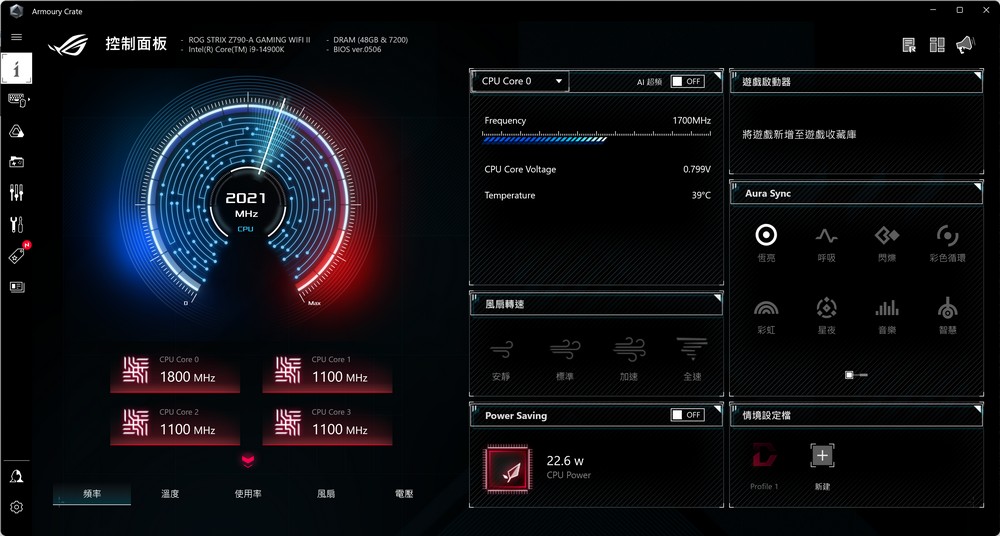
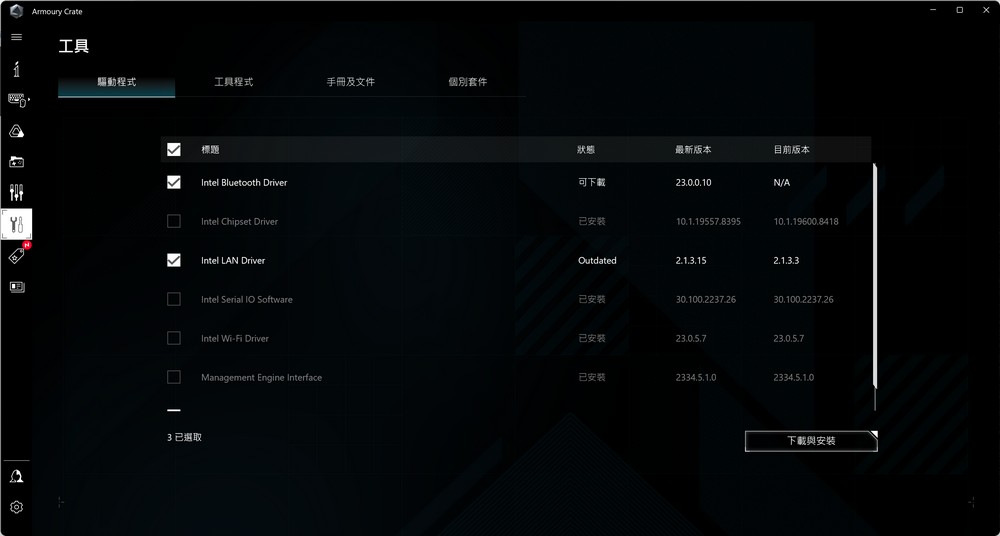
Summary
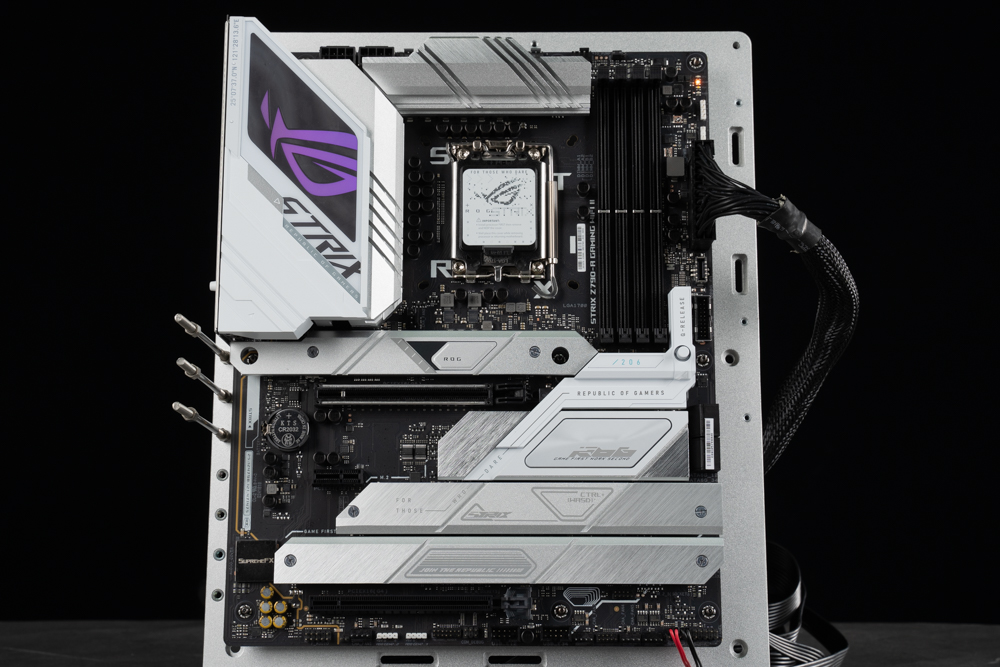
ASUS’s introduction of the ROG A series motherboards represents an entry-level offering within the ROG family. However, the ROG STRIX Z790-A GAMING WIFI II exemplifies that it incorporates a wealth of high-end features, making it a compelling choice. These features include premium power supply components and support for ultra-high memory frequencies. With support for five M.2 slots, Q-LED debugging lights, a user-friendly design, and the inclusion of Wi-Fi 7, both novice and experienced gamers can appreciate its capabilities without compromising the striking white aesthetic.
Apart from its exceptional industrial design and robust hardware specifications, ASUS ROG enjoys immense popularity among gamers due to its comprehensive ecosystem. The BIOS interface is user-friendly and offers a range of advanced features, catering to both beginners and overclocking enthusiasts. Armcoury Crate provides extensive control over lighting effects, fan management, and driver updates. Furthermore, ASUS offers exclusive software solutions for gamers, encompassing sound enhancements and network optimizations.
If this article is helpful for you, please share this article with your friends on social media. Thank you!
This article is based on the personality of the reviews. You are responsible for fact-checking if the contents are not facts or accurate.
Title: ROG STRIX Z790-A GAMING WIFI II Review: Ultimate Performance with Intel’s 14th Gen Support, Wi-Fi 7, and Enhanced Overclocking Capabilities